
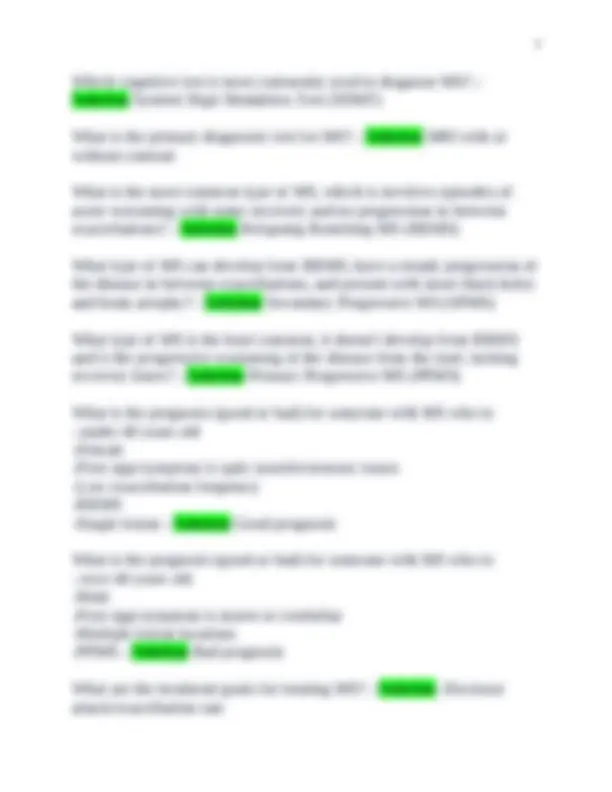
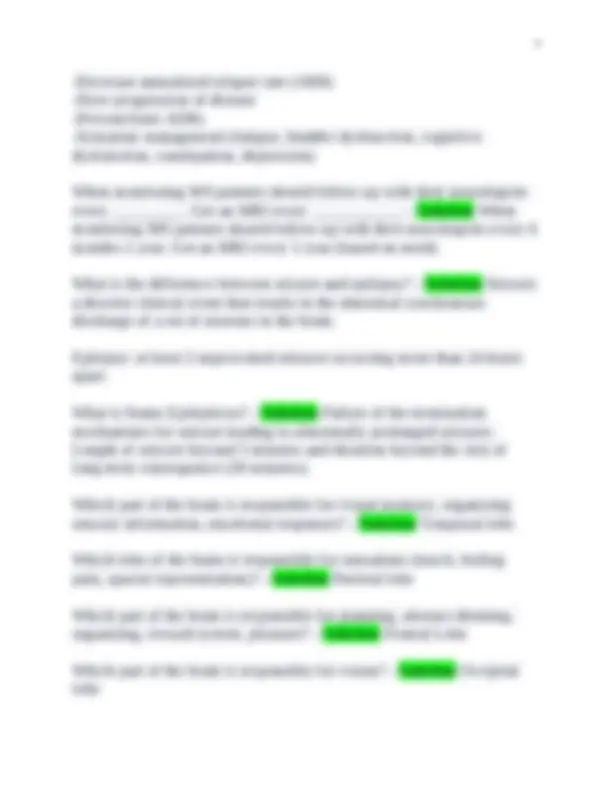
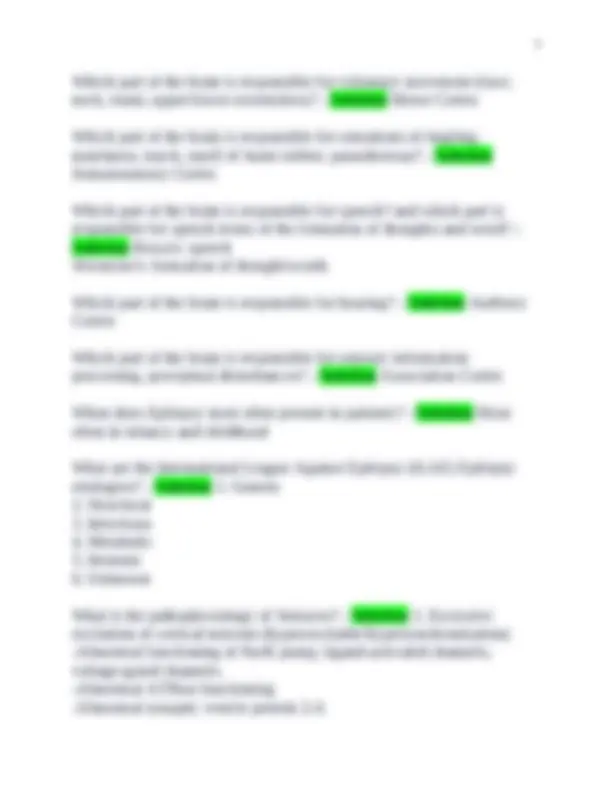
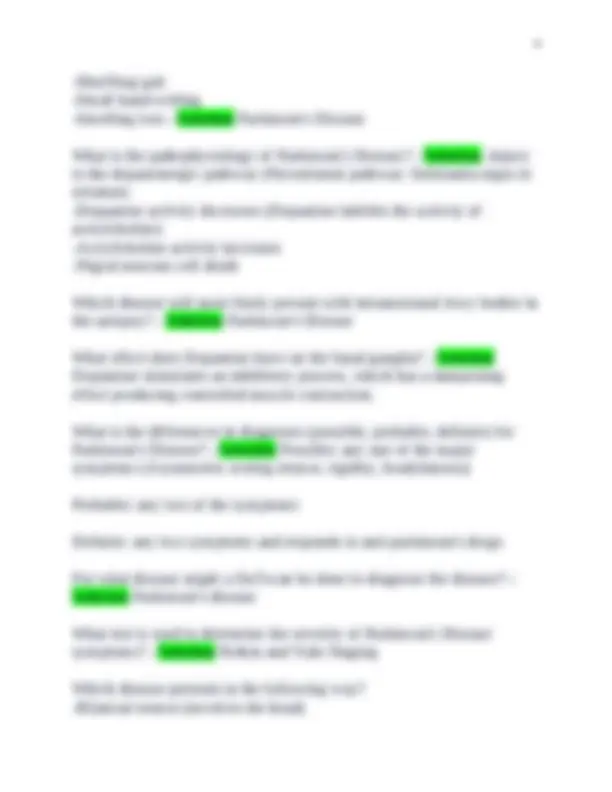
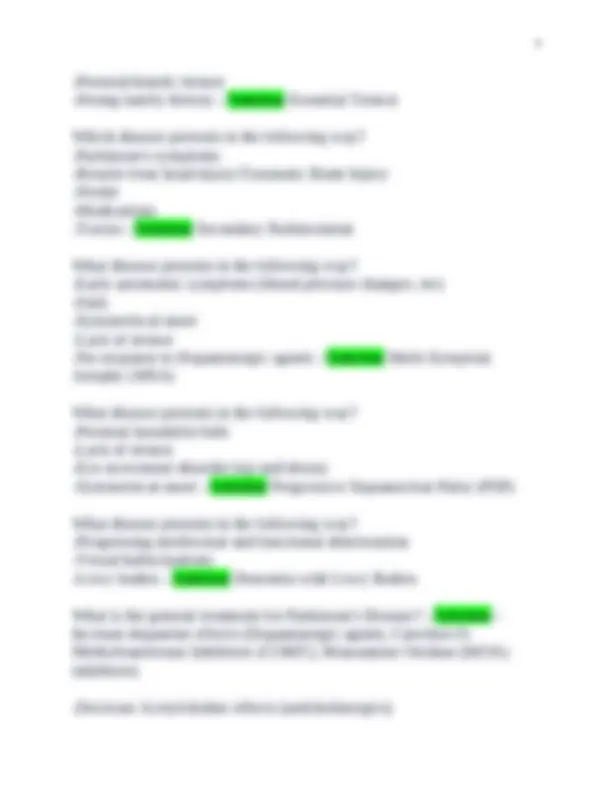
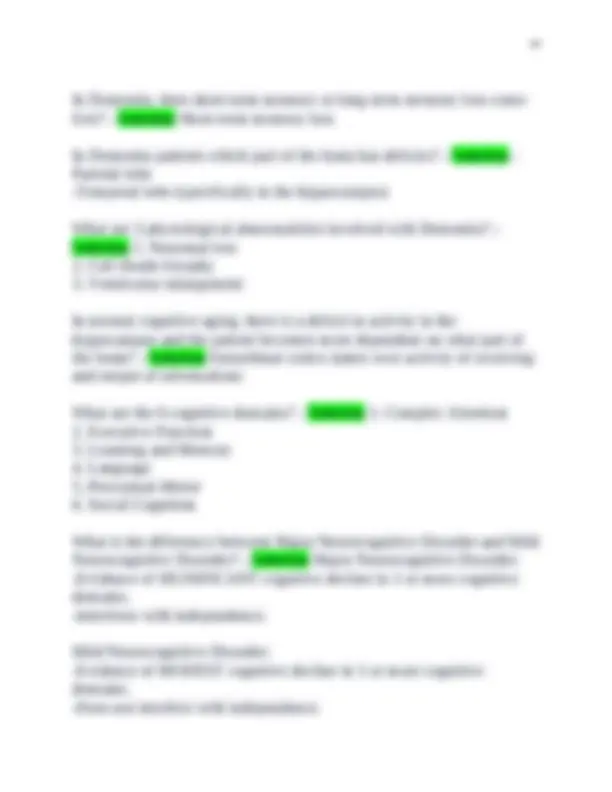
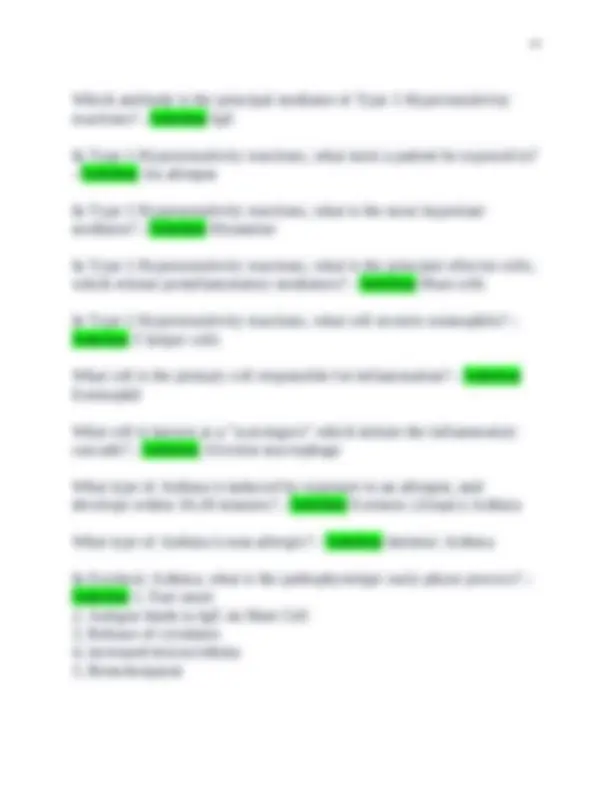
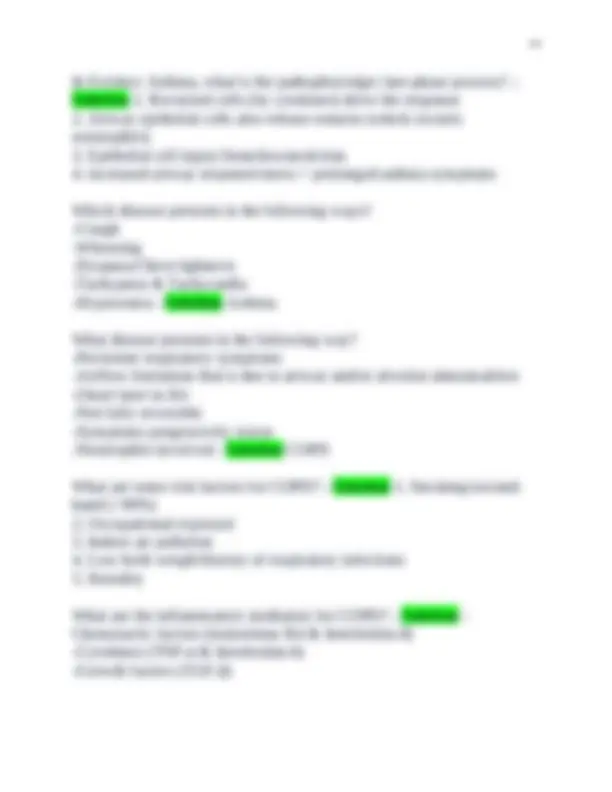
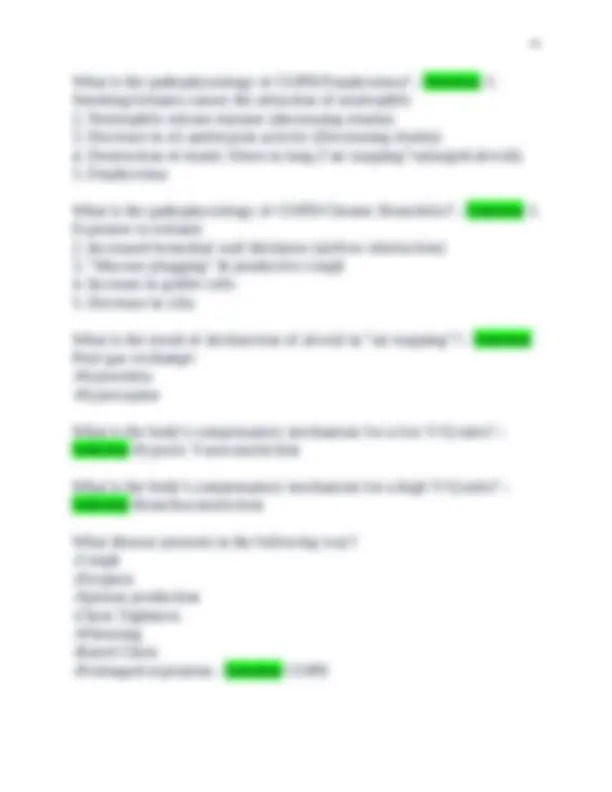
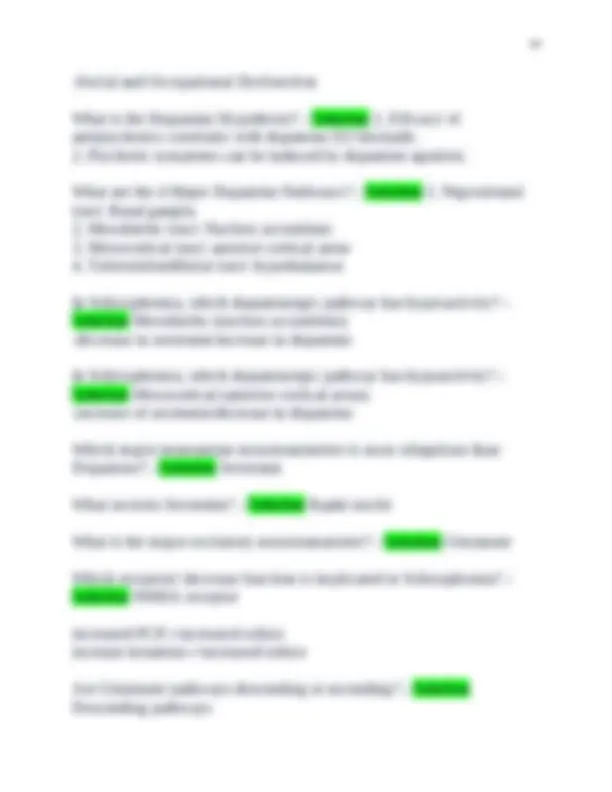
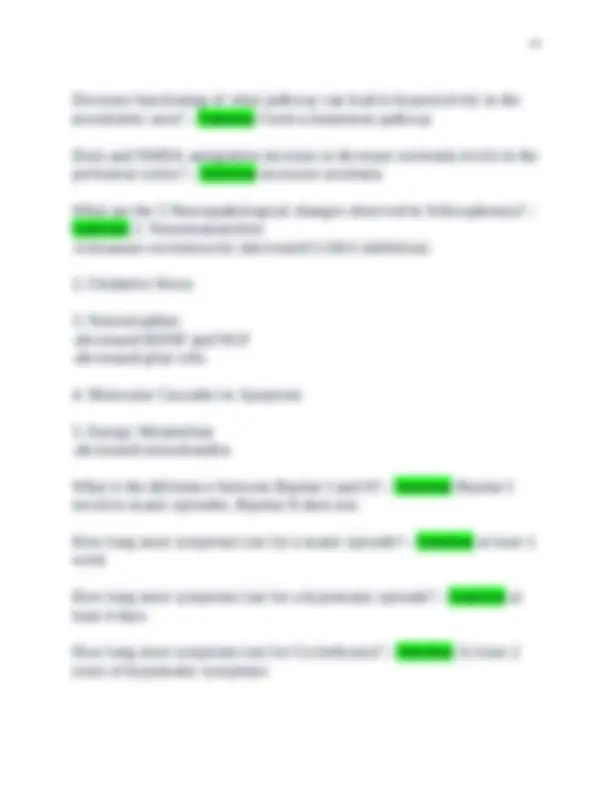
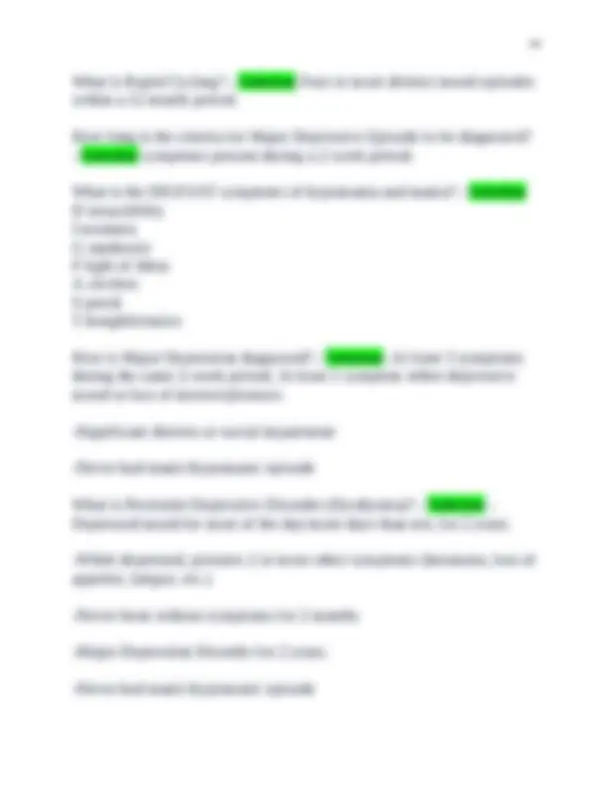
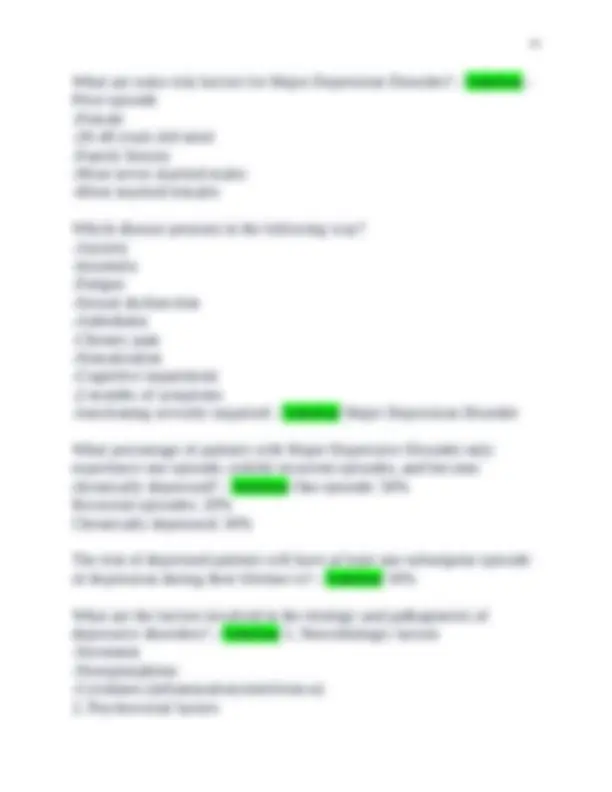
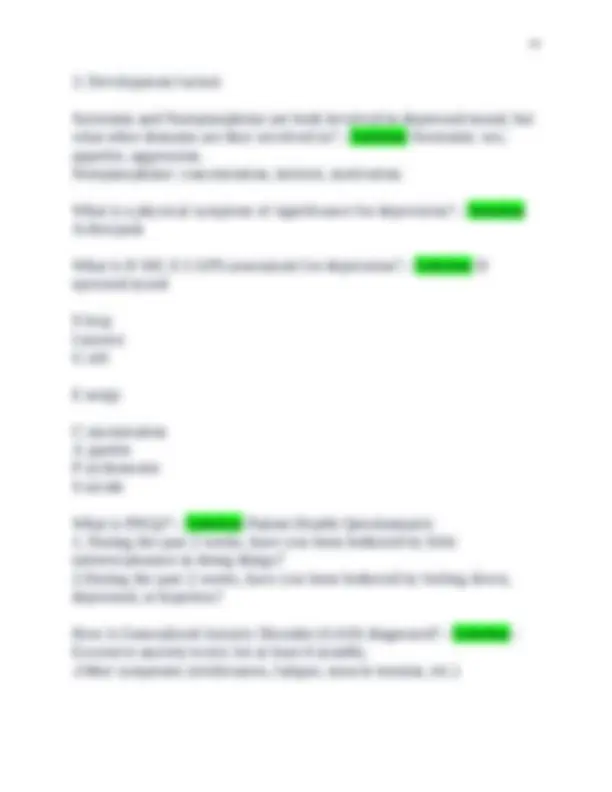
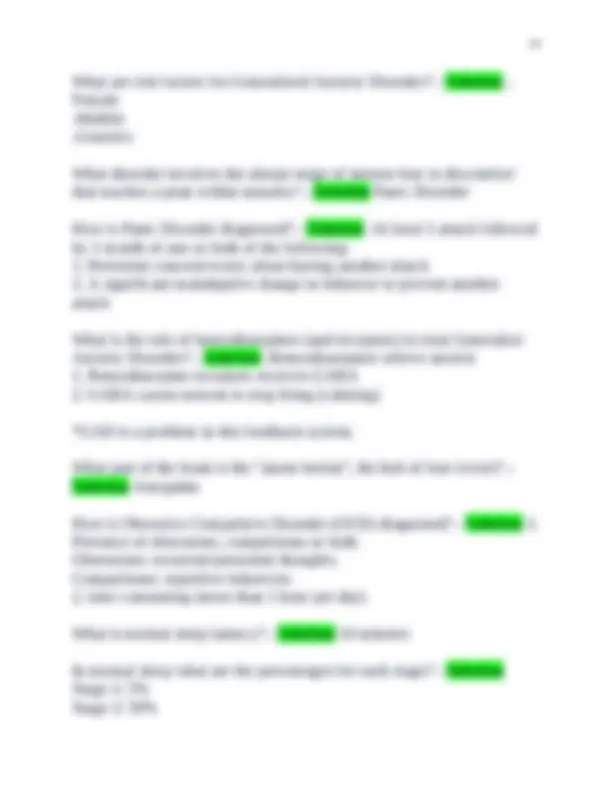
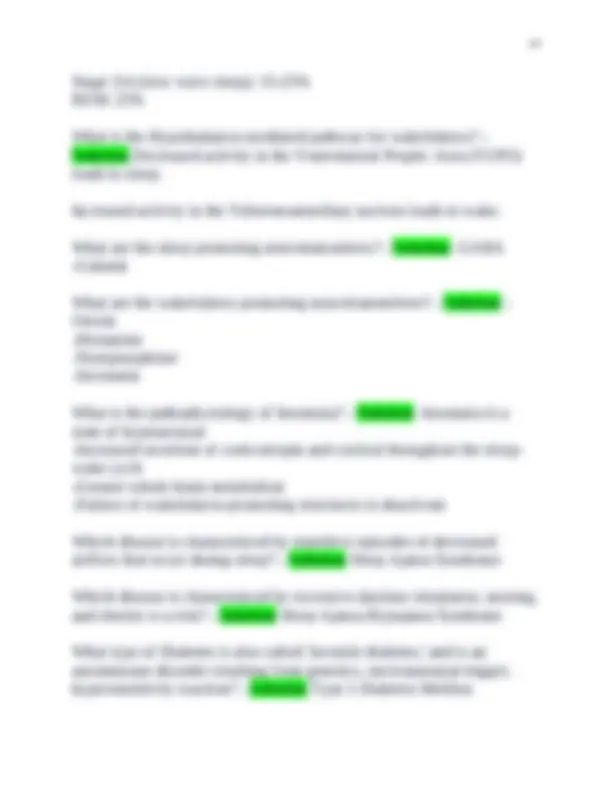
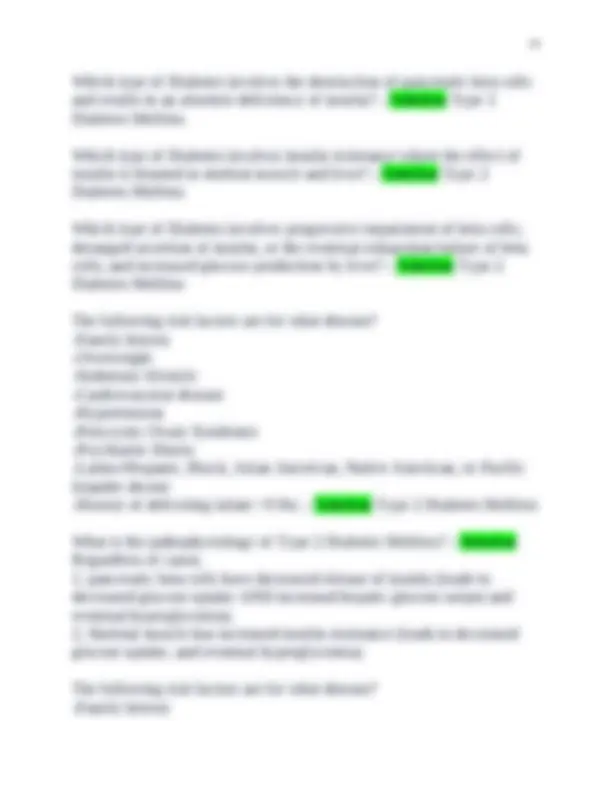
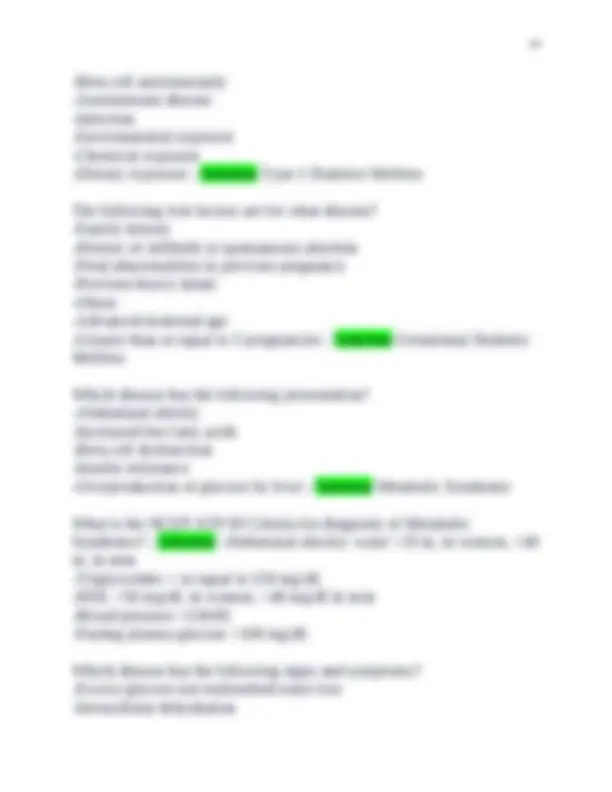
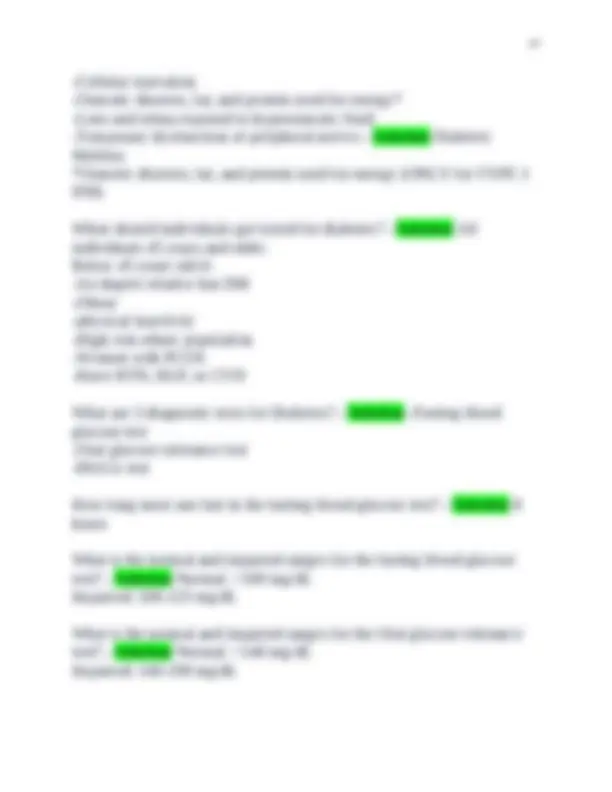
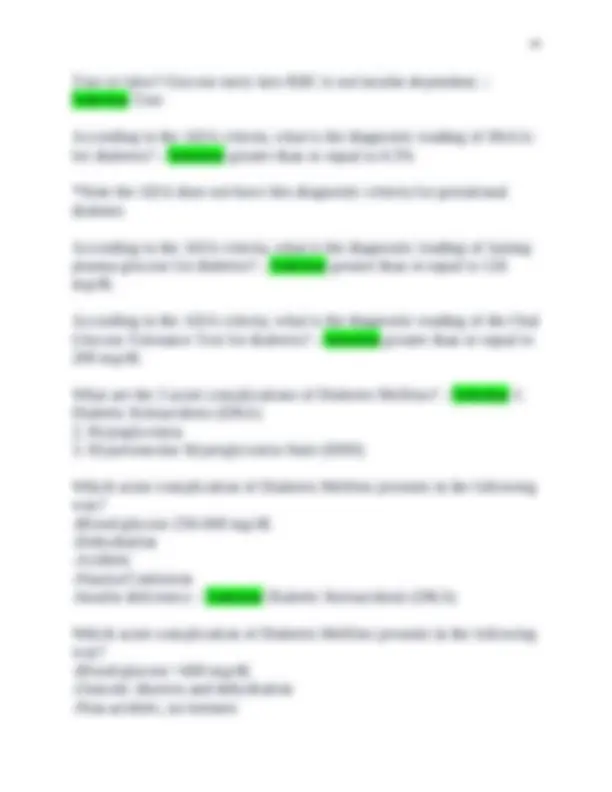
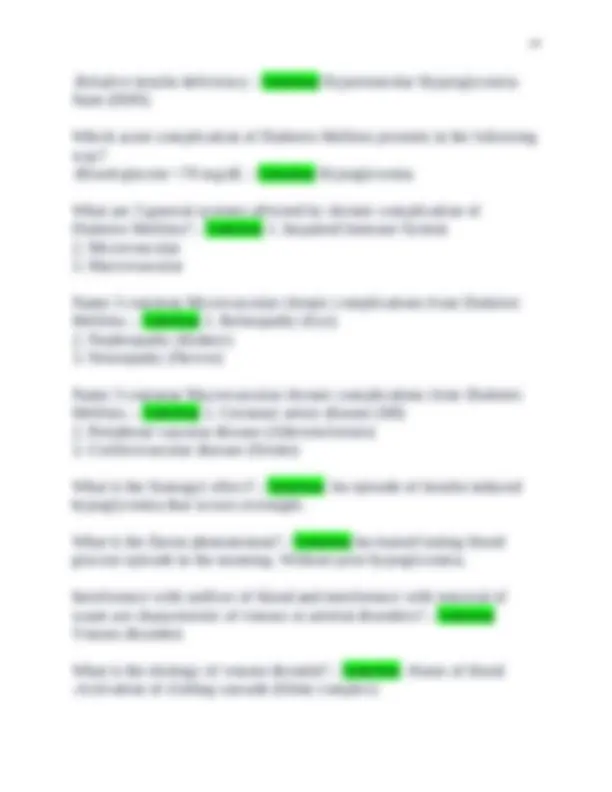
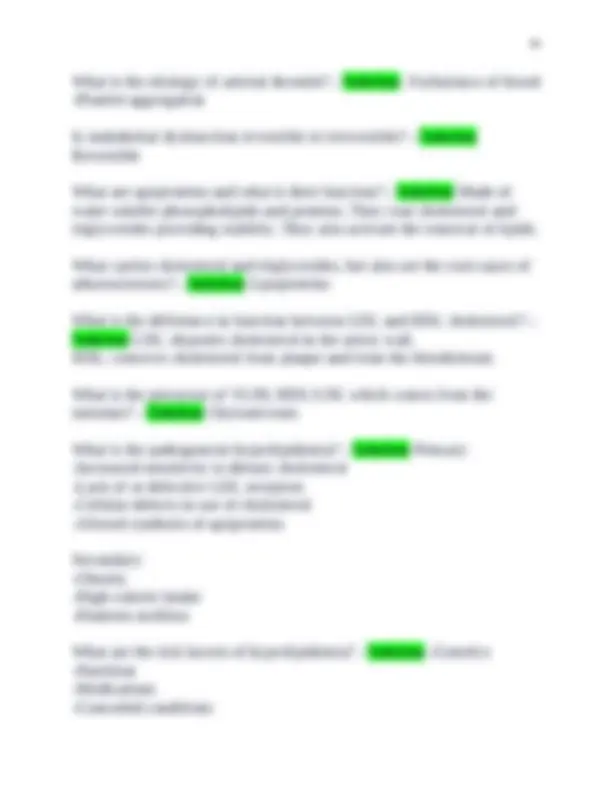
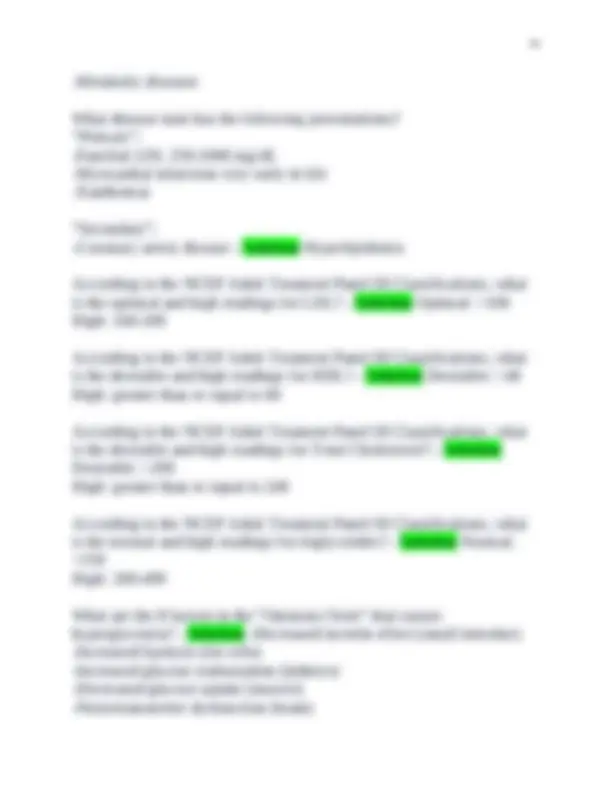
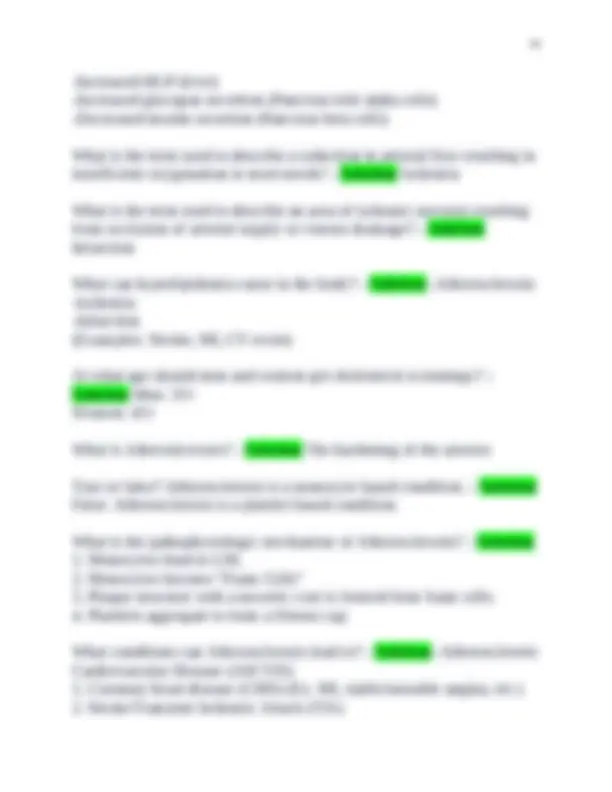
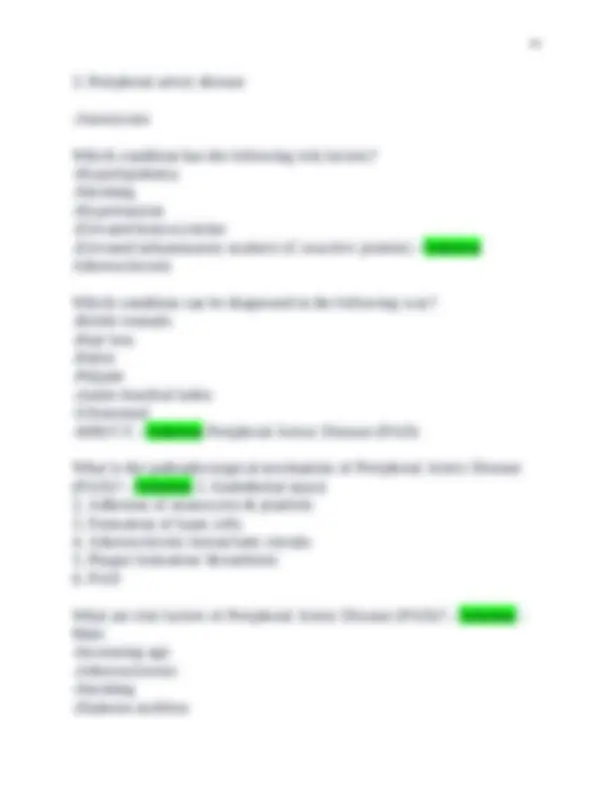
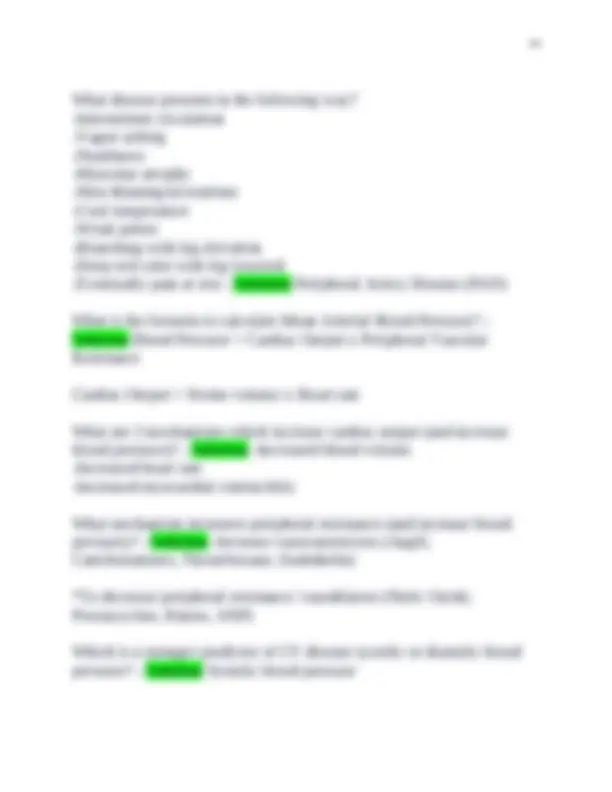
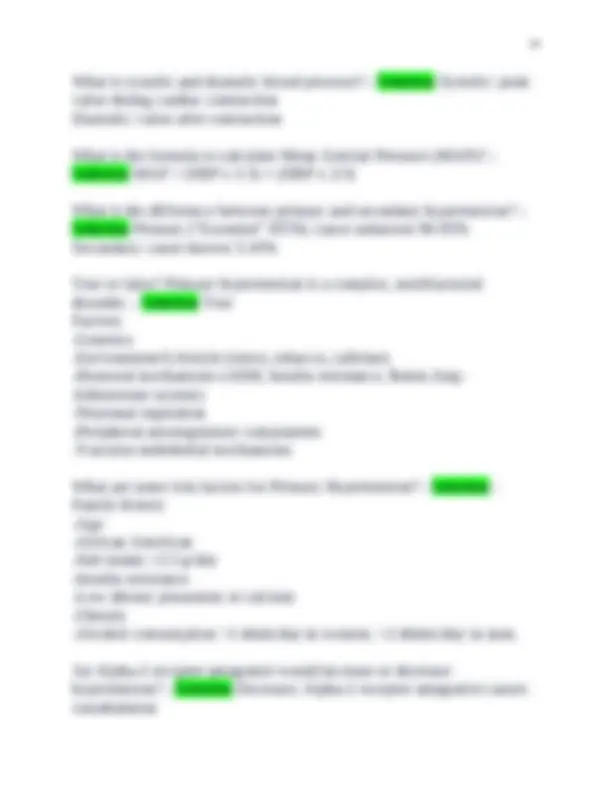
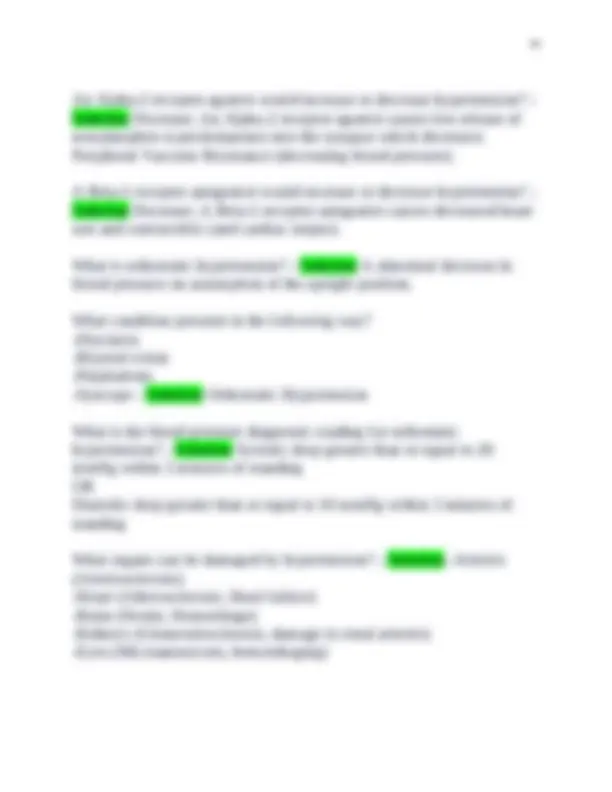
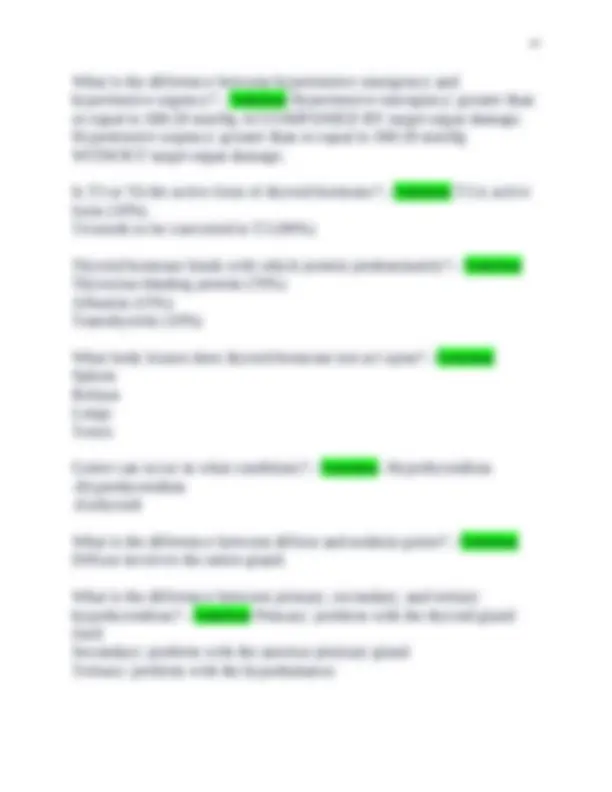
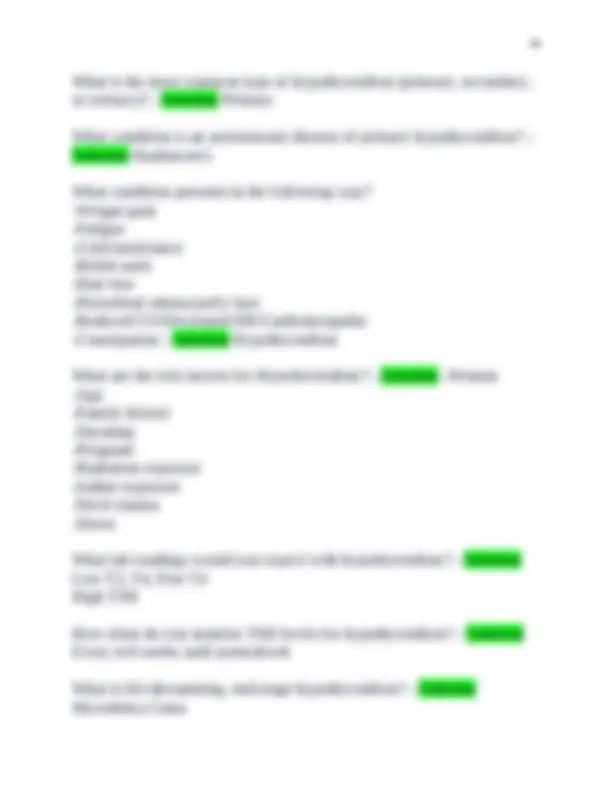
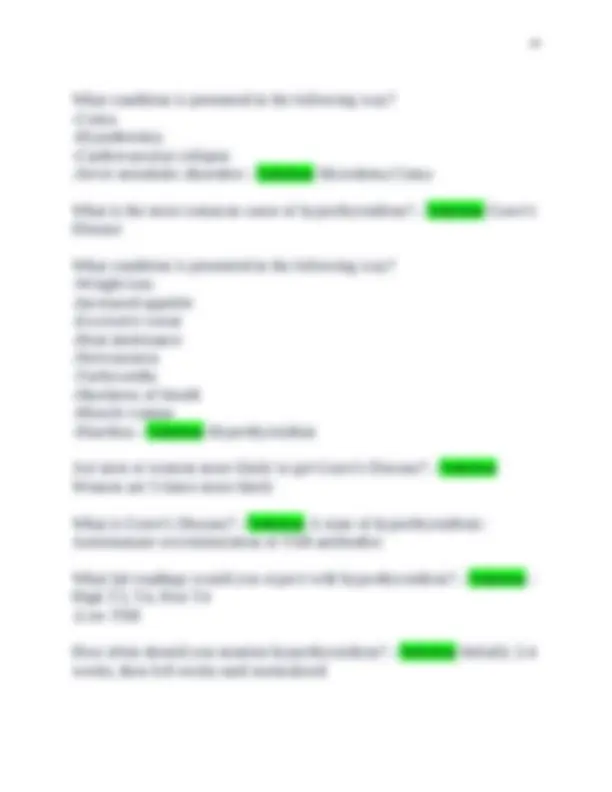
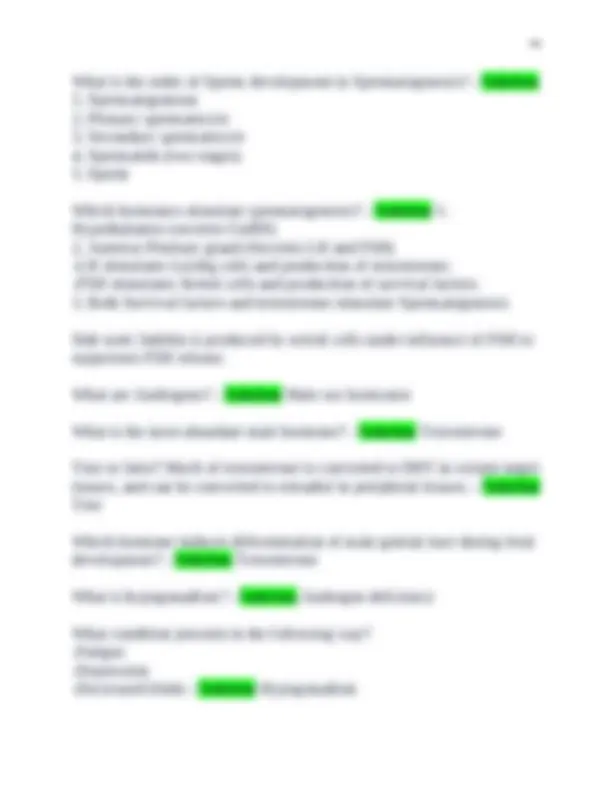
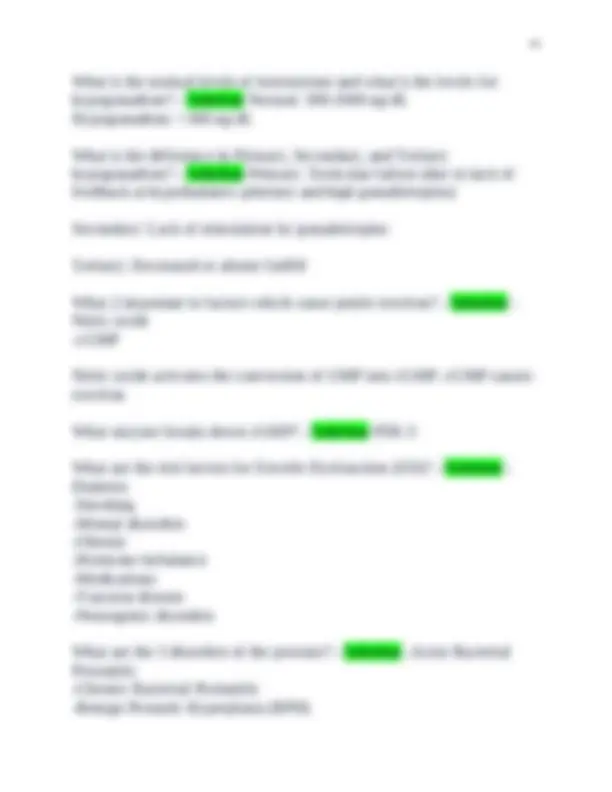
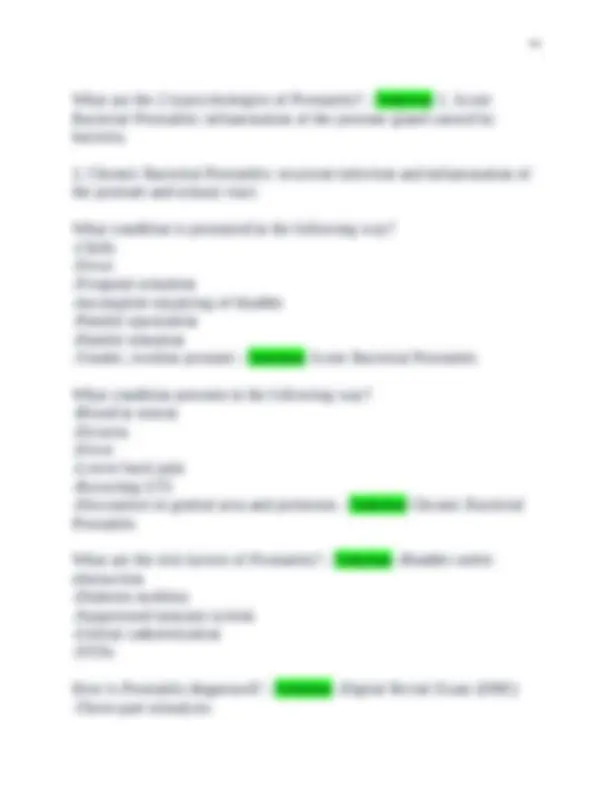
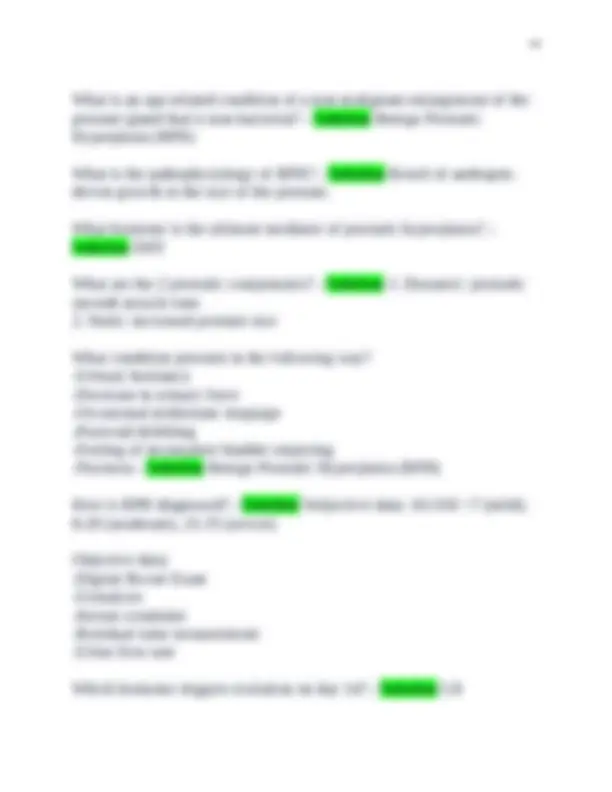
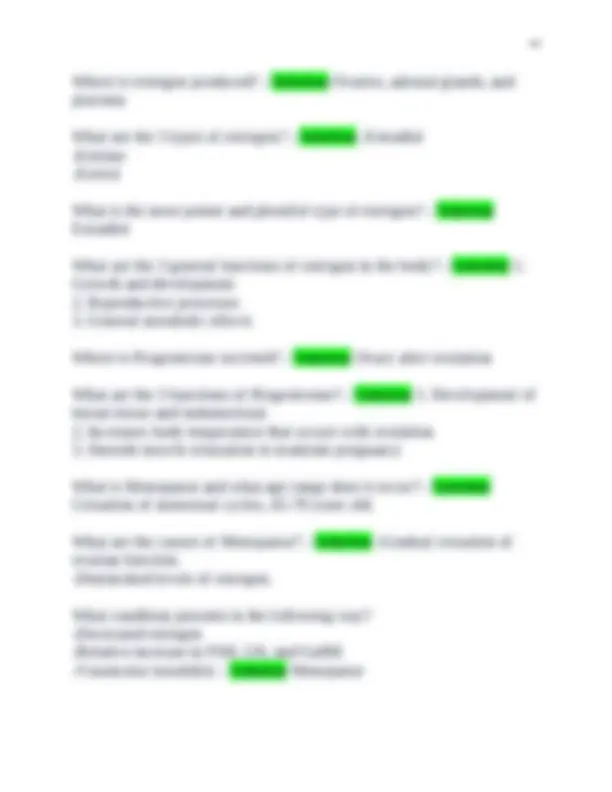
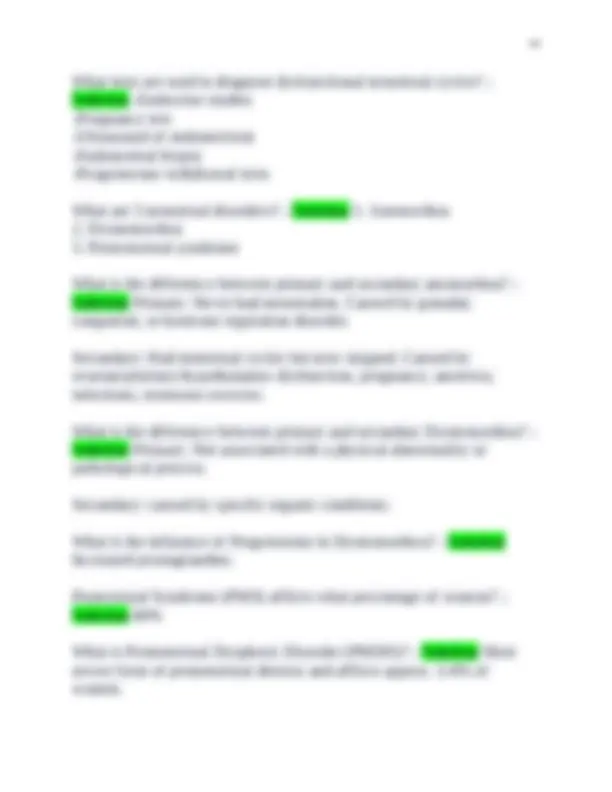
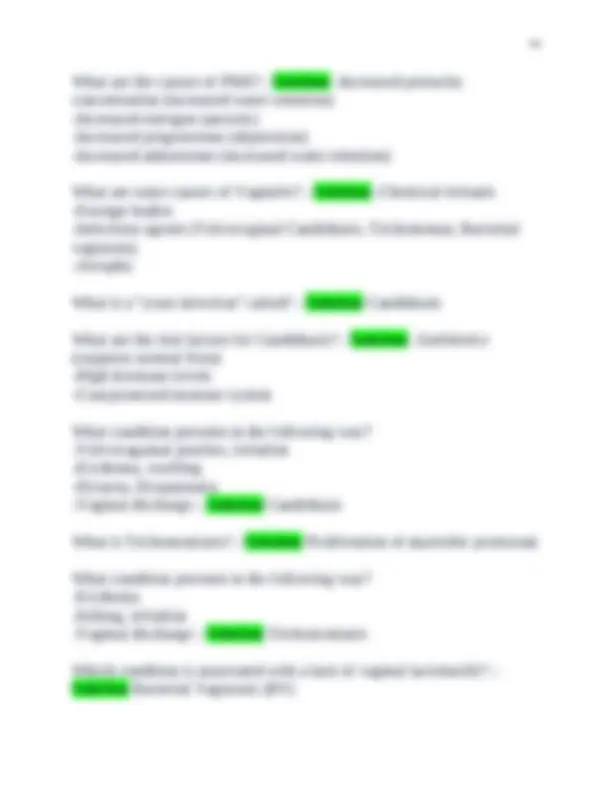
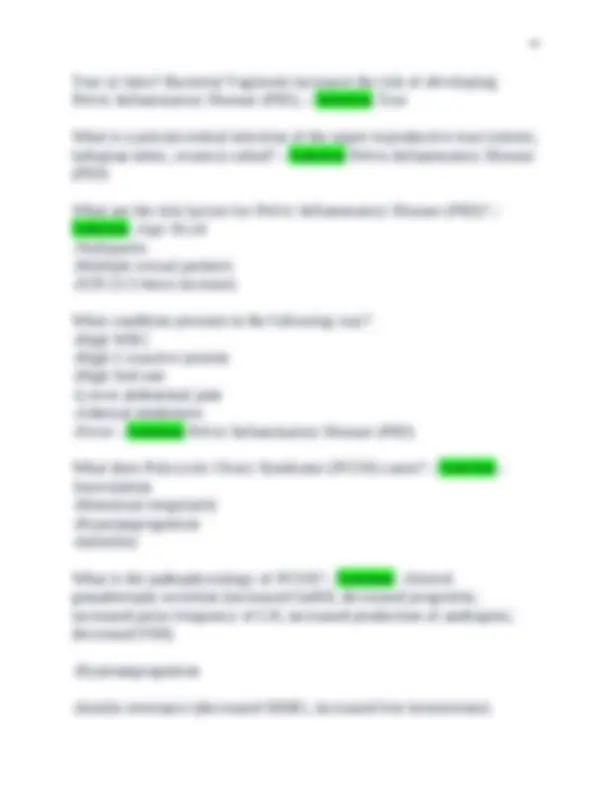
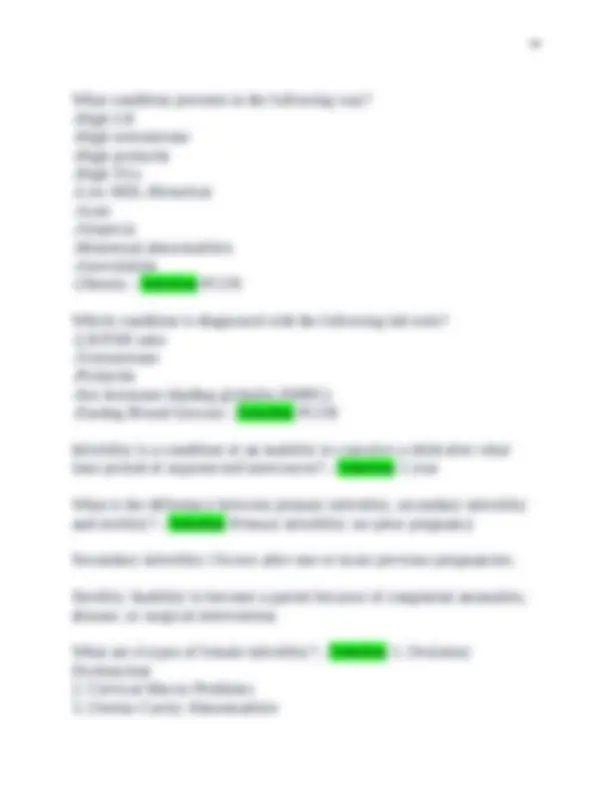
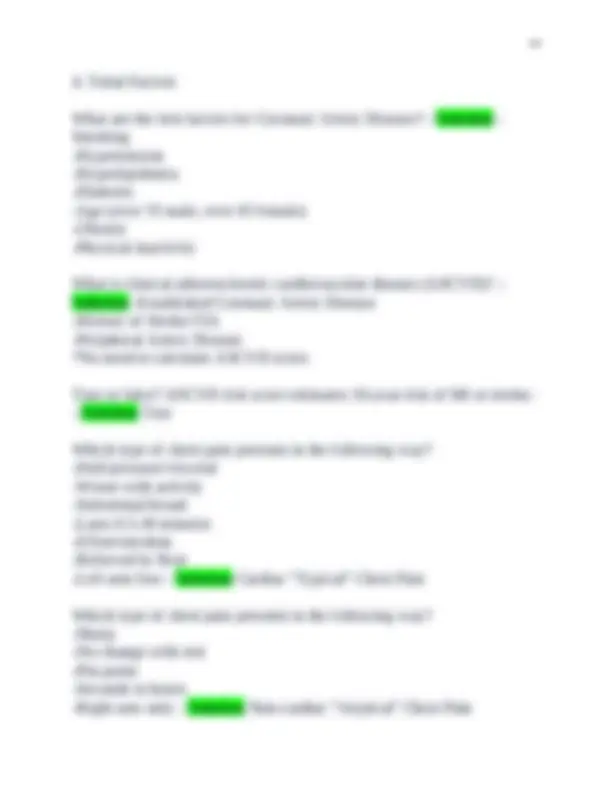
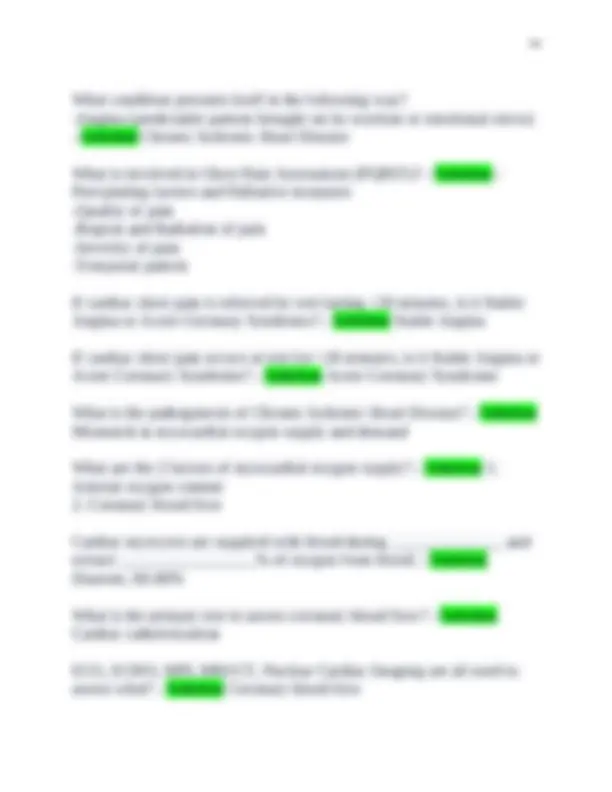
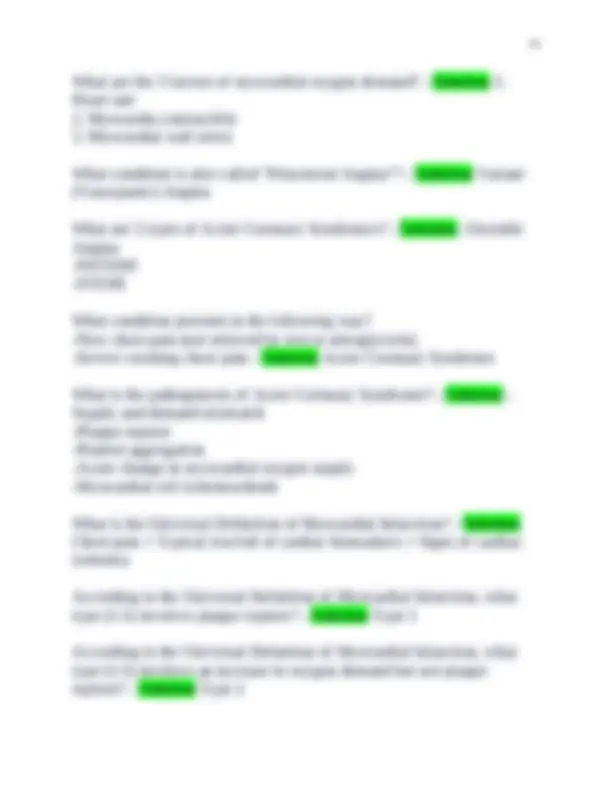
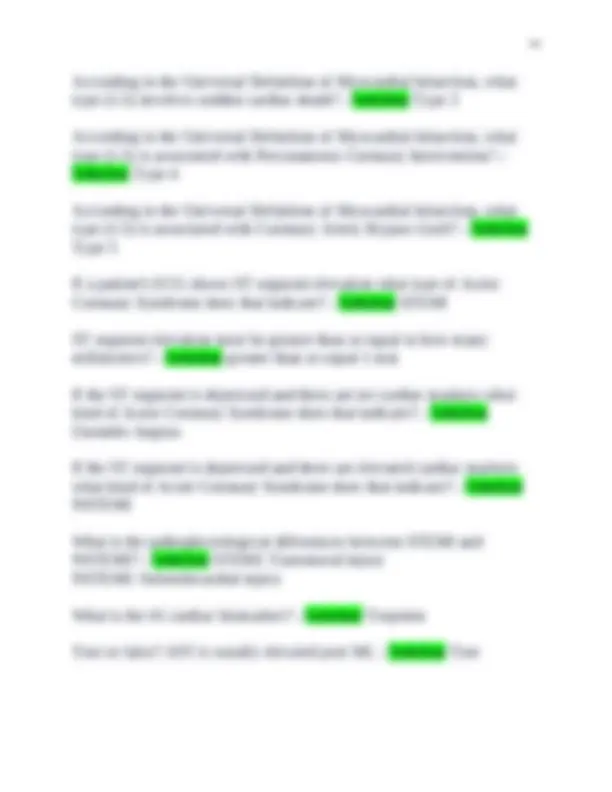
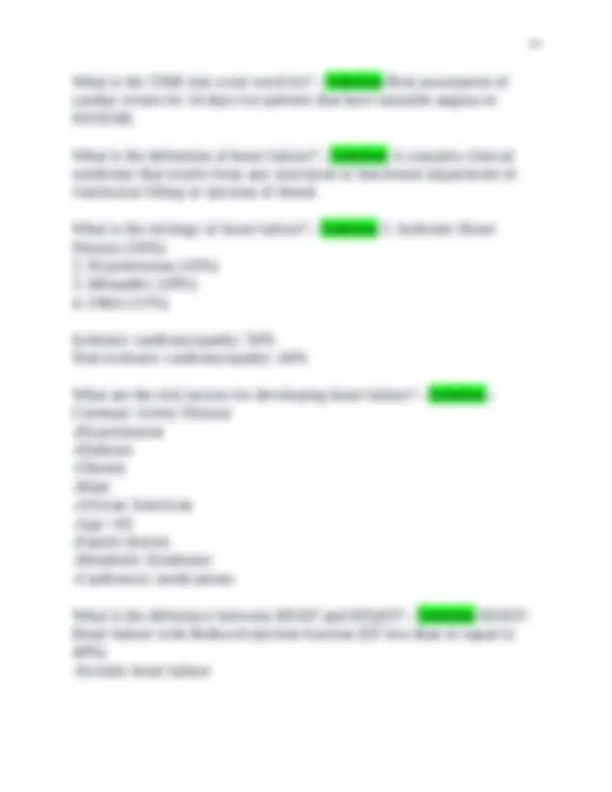
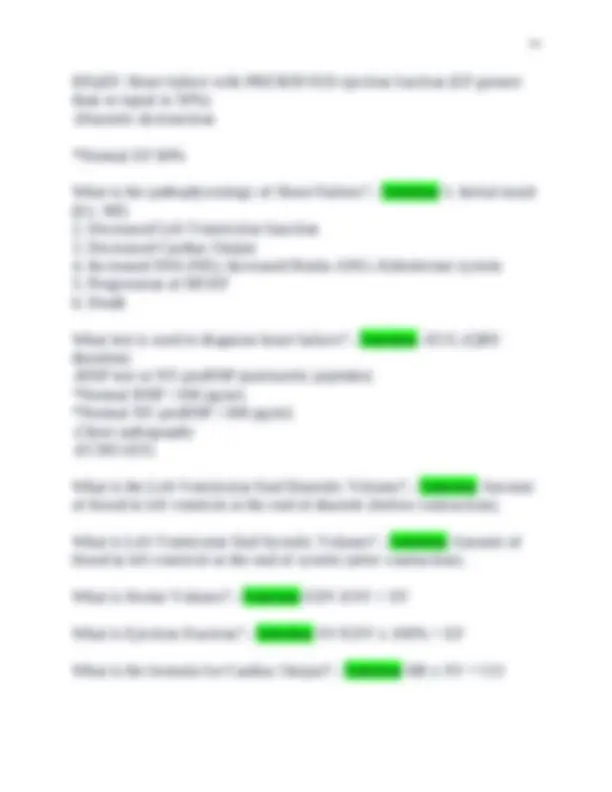
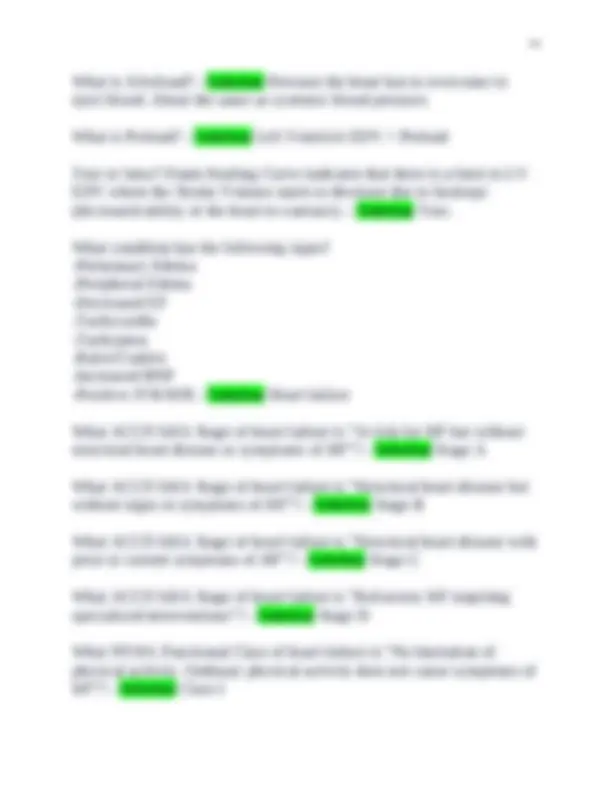
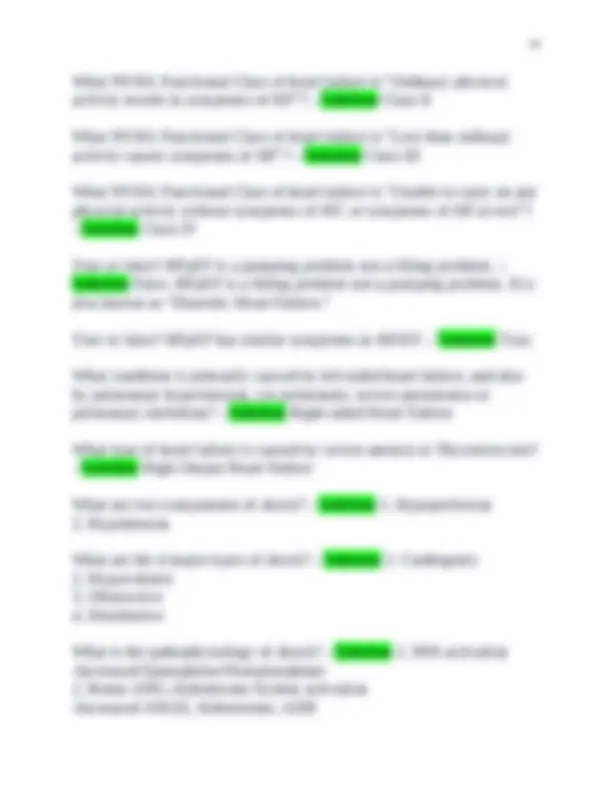
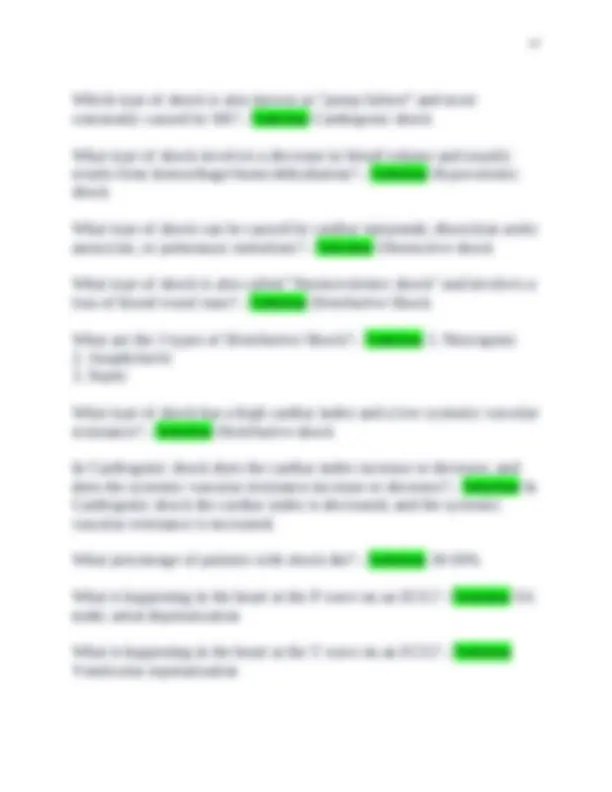
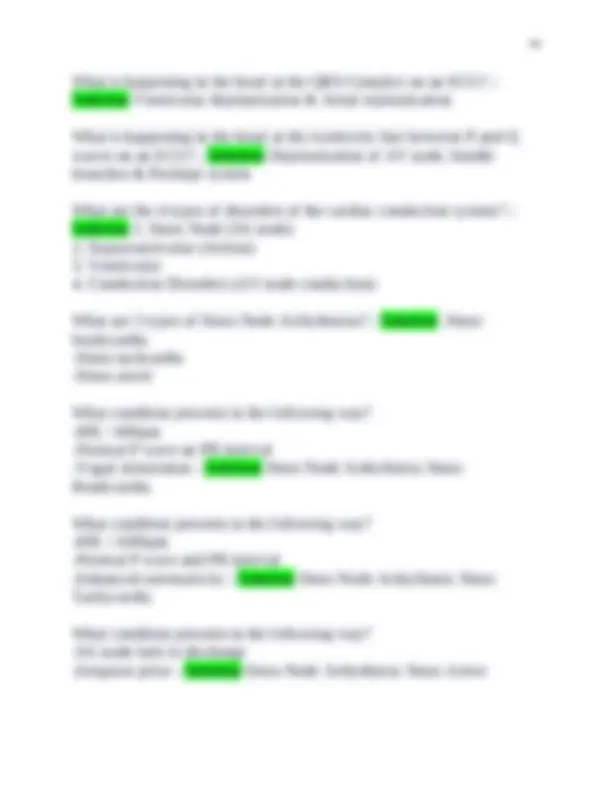
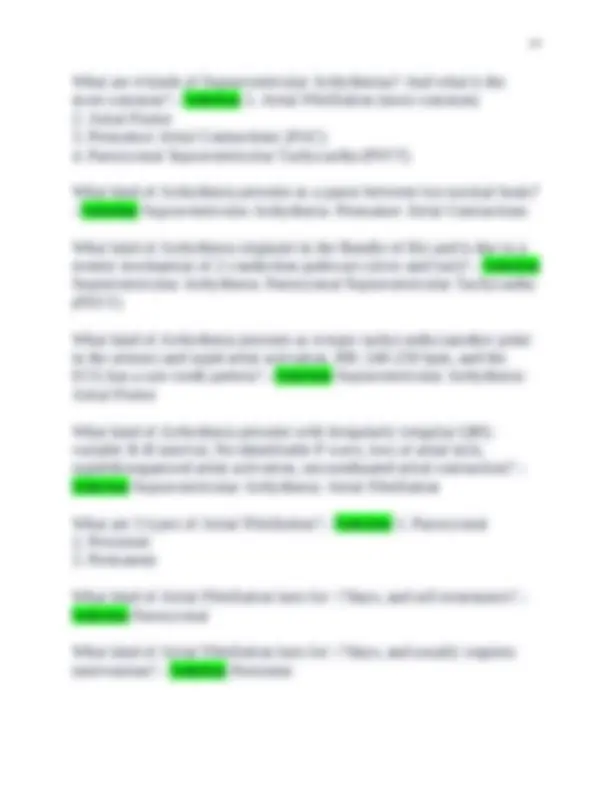
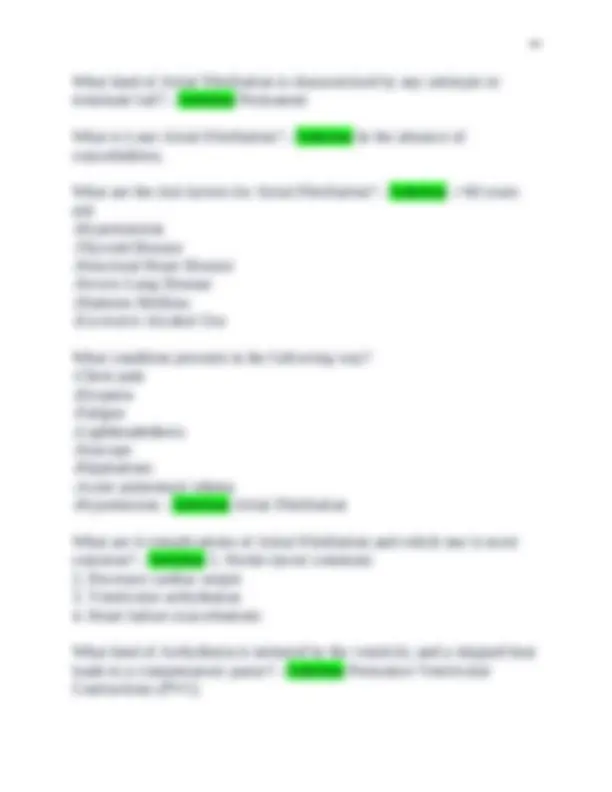
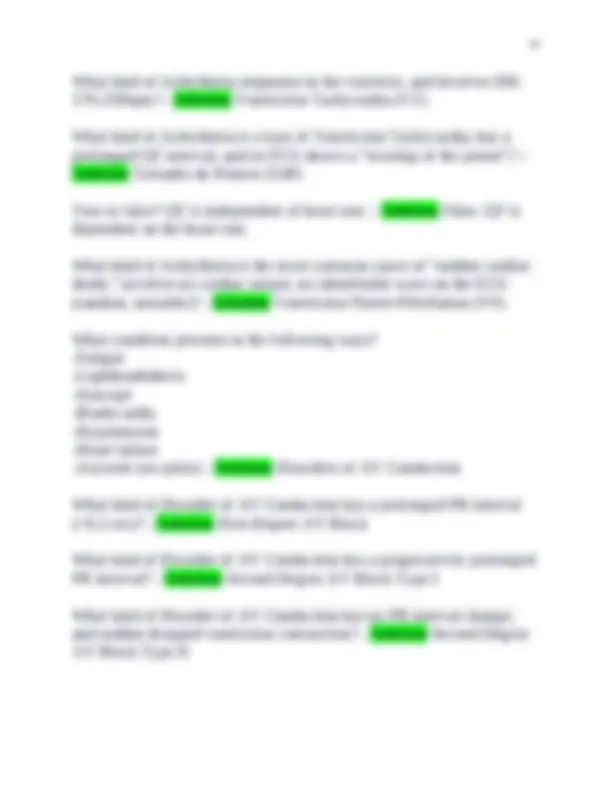
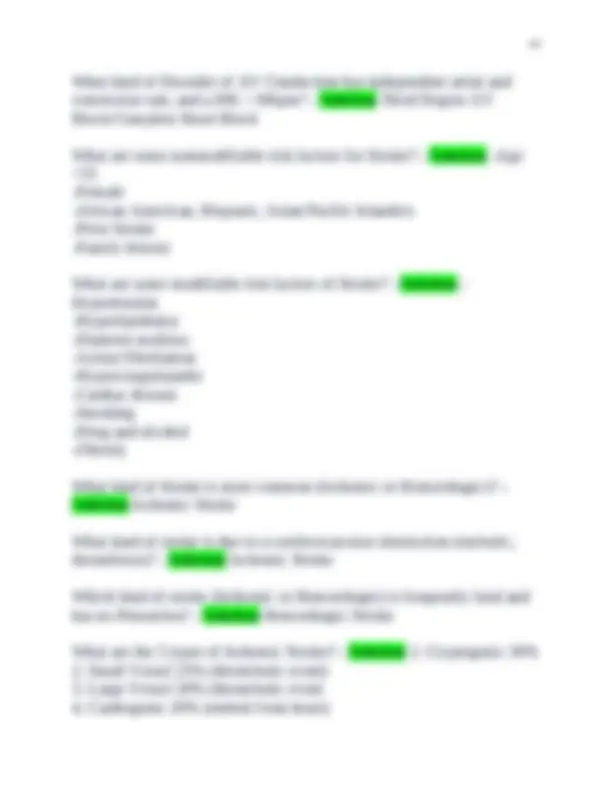
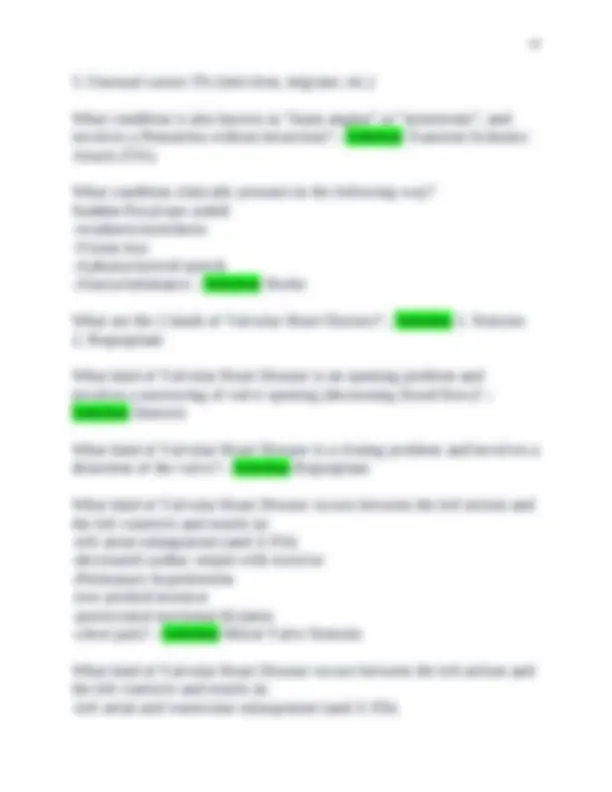
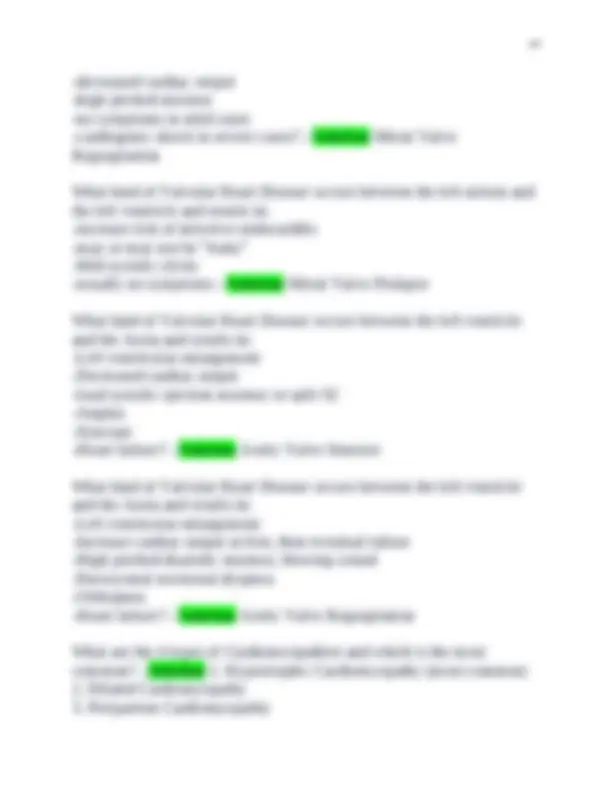
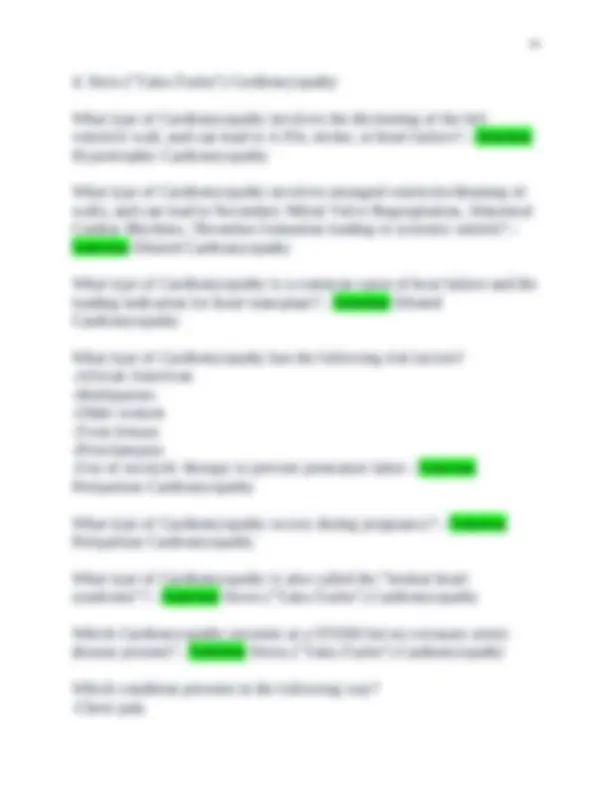
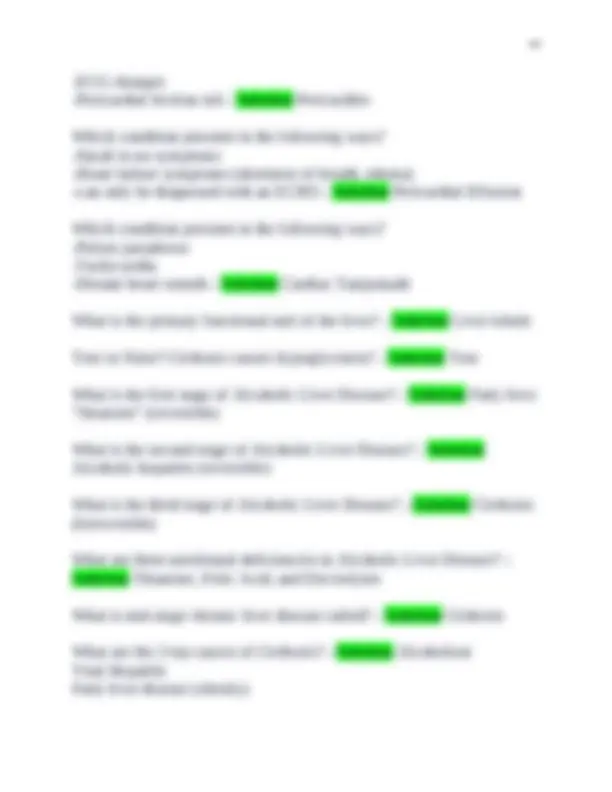
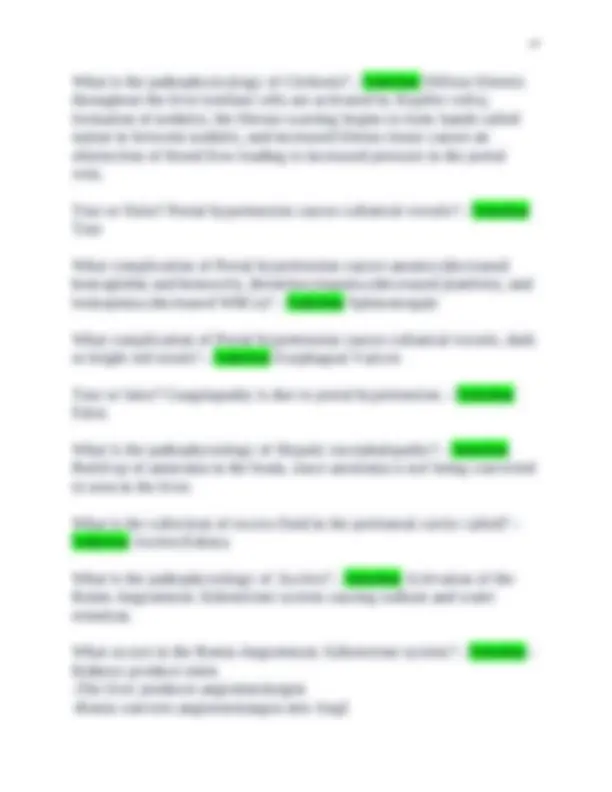
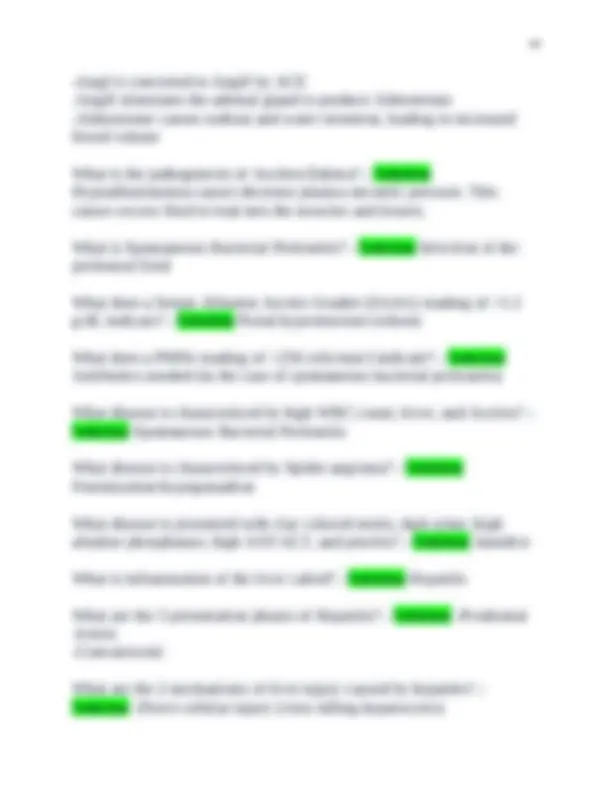
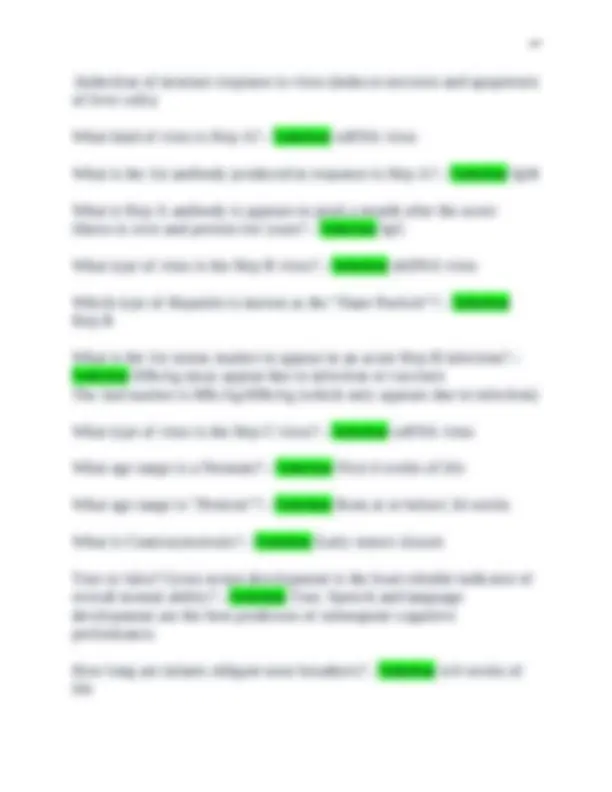
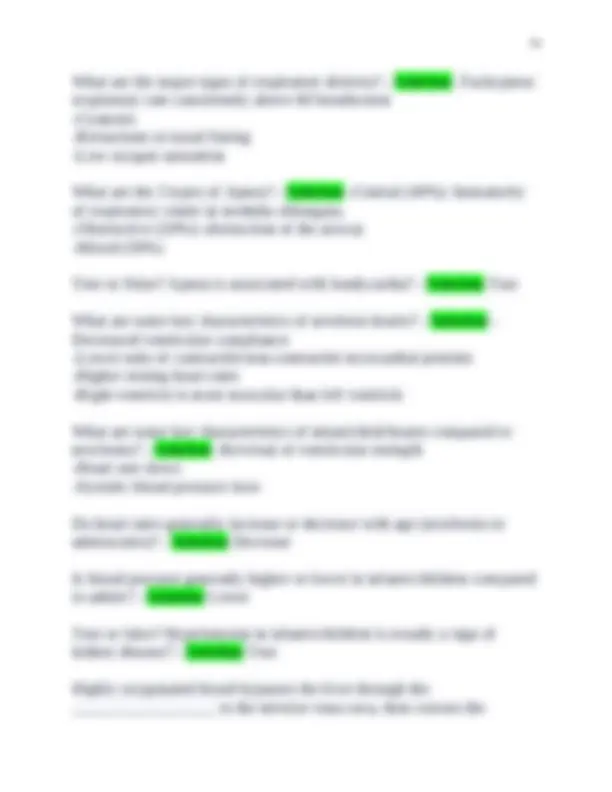
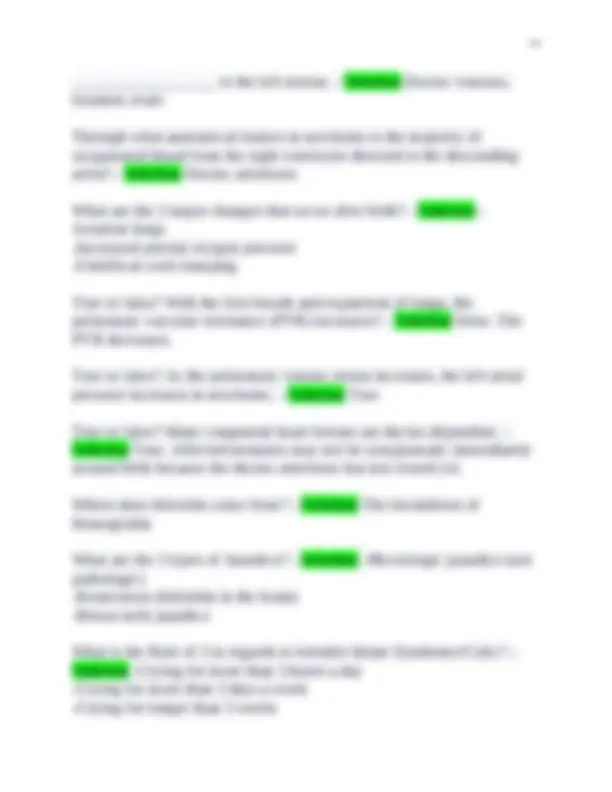
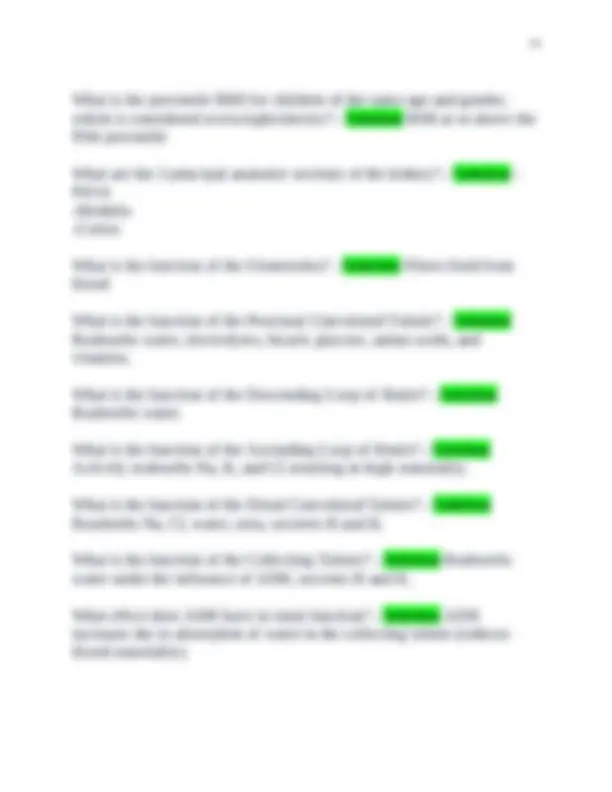
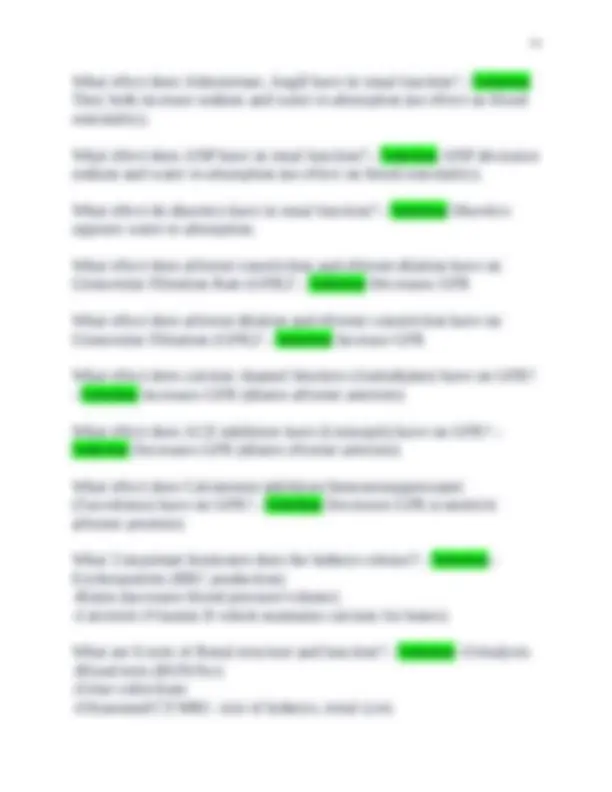
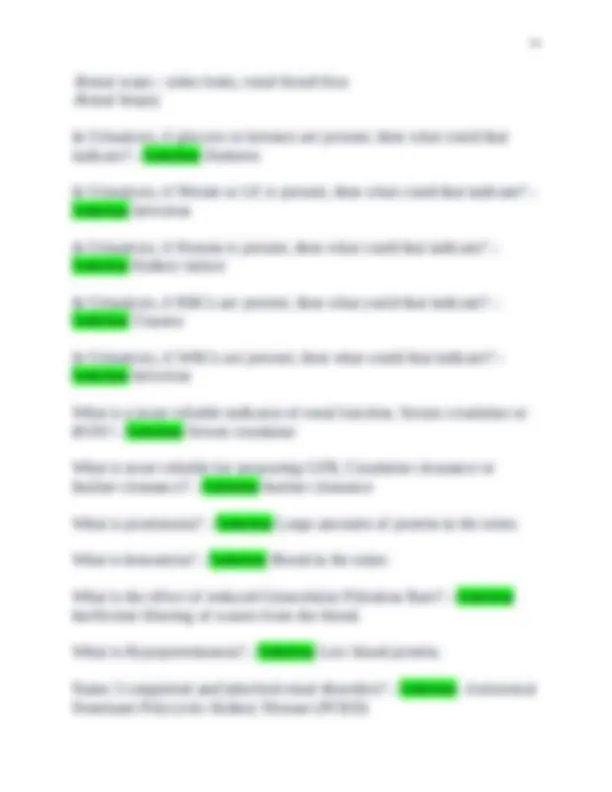
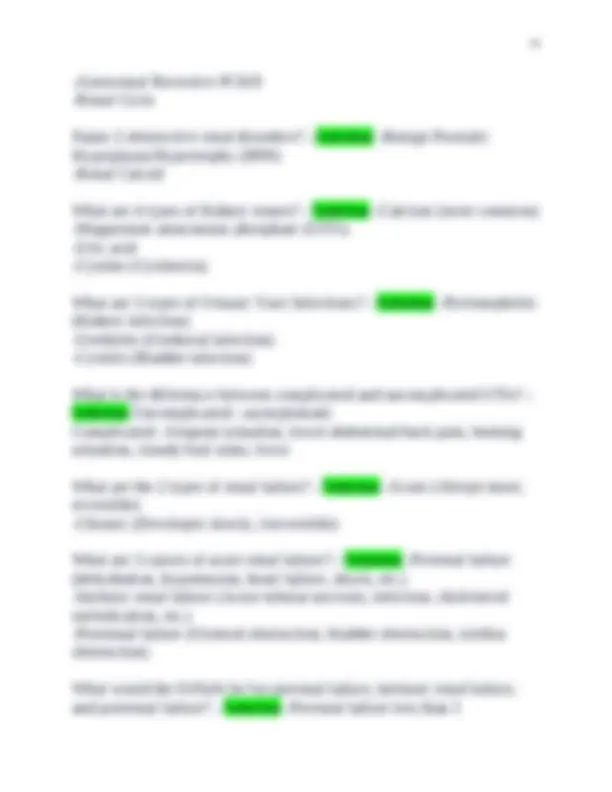
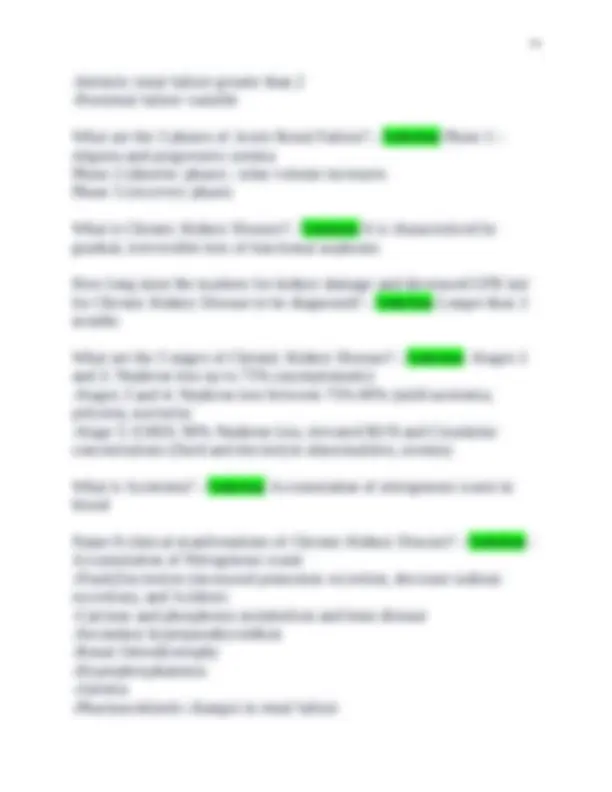
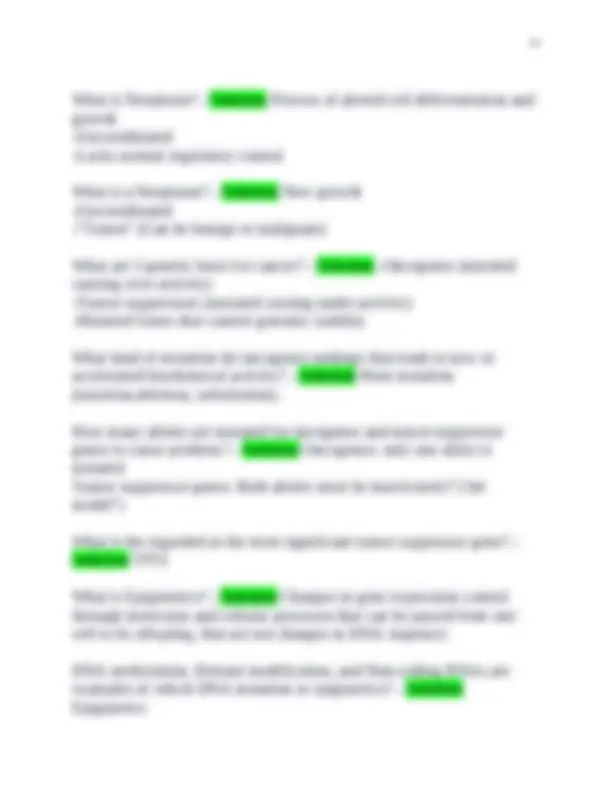
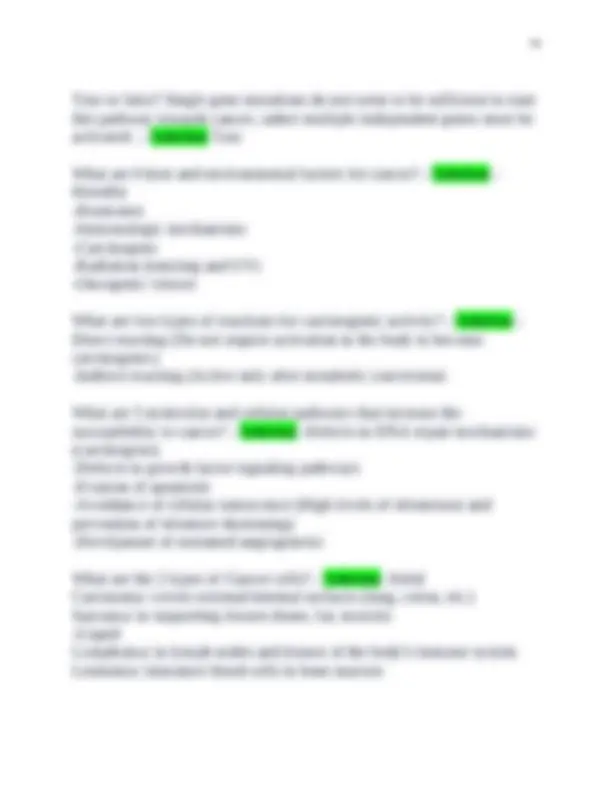
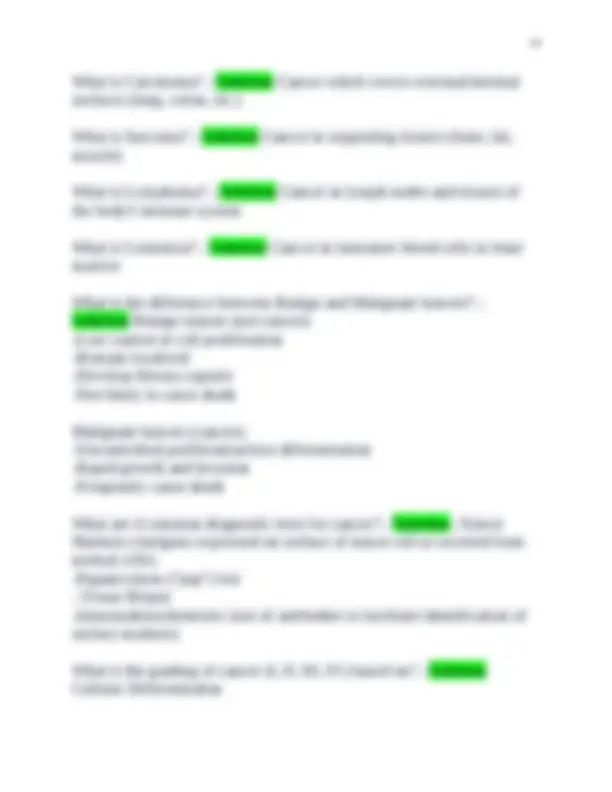
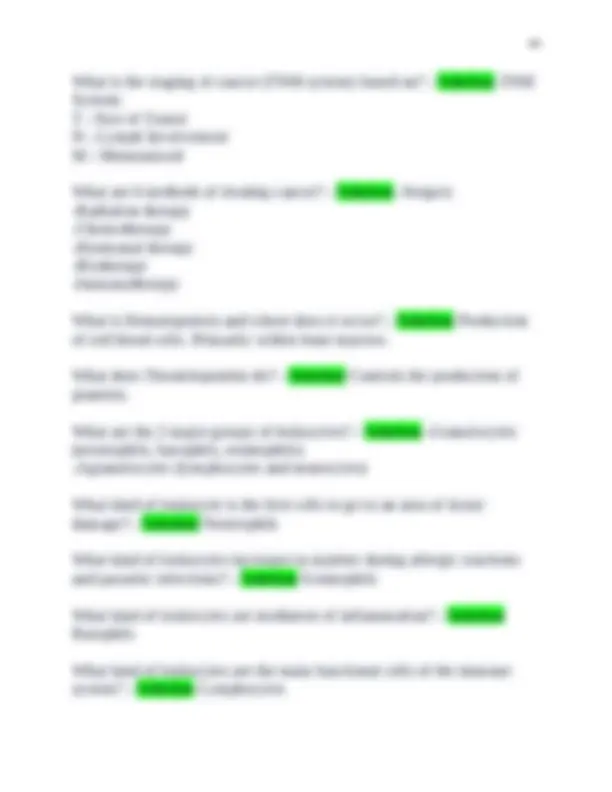
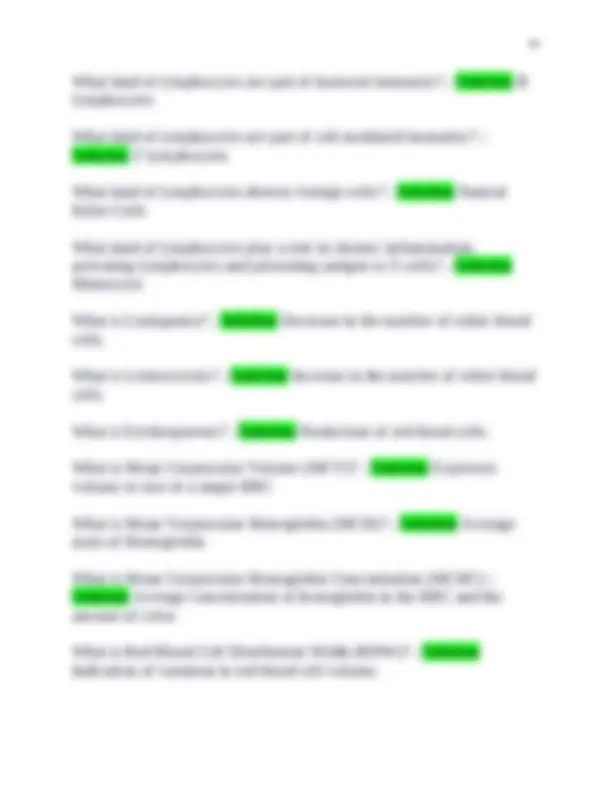
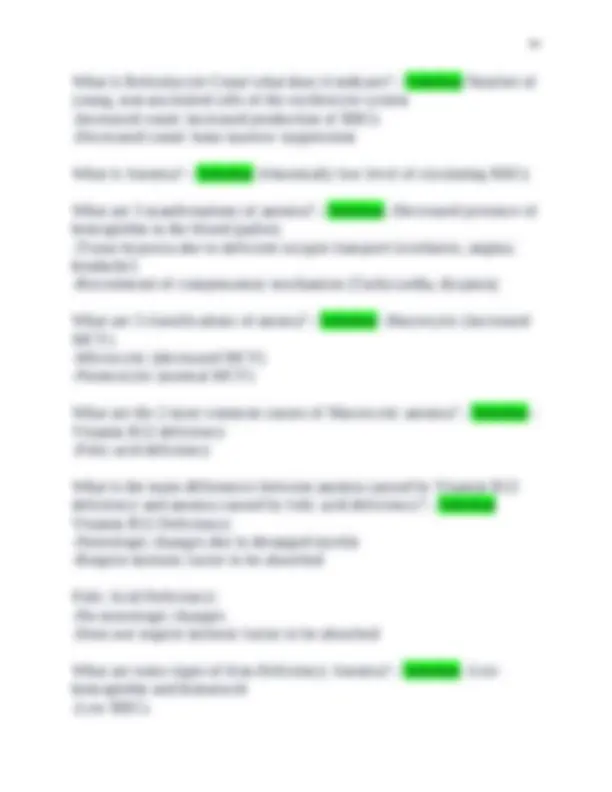

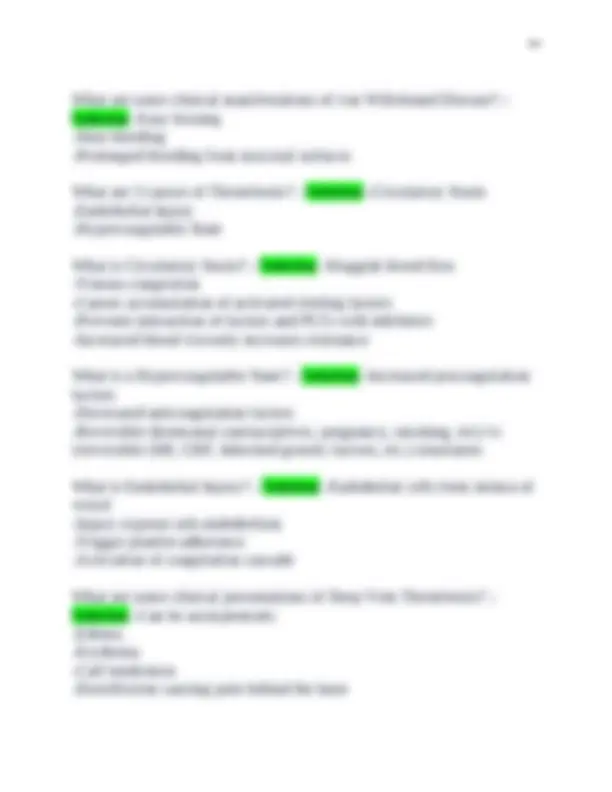
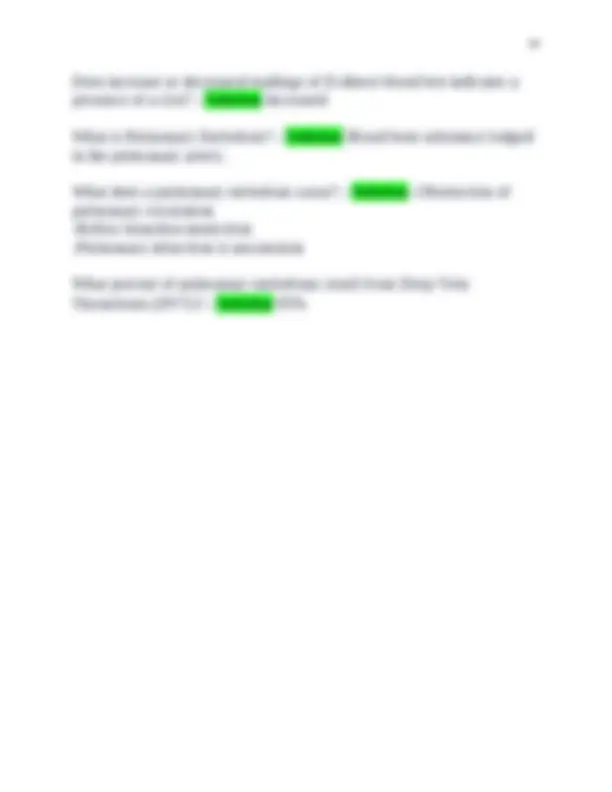


Study with the several resources on Docsity

Earn points by helping other students or get them with a premium plan


Prepare for your exams
Study with the several resources on Docsity

Earn points to download
Earn points by helping other students or get them with a premium plan
Community
Ask the community for help and clear up your study doubts
Discover the best universities in your country according to Docsity users
Free resources
Download our free guides on studying techniques, anxiety management strategies, and thesis advice from Docsity tutors
Advanced pathophysiology Q&A Advanced pathophysiology Q&A.
Typology: Exams
1 / 85

This page cannot be seen from the preview
Don't miss anything!














































































Do women or men more often have multiple sclerosis? - Solution Women (2-3:1) Which disease has the following risk factors: -Epstein-barr virus (EBV) -Live above the 37th parallel -Caucasian -Female -Vitamin D deficiency: Decreased time between clinical isolated syndrome (CIS) and 2nd exacerbation -Smoking - Solution Multiple Sclerosis What is the main pathophysiological theory for multiple sclerosis? - Solution It's an autoimmune/neurodegenerative disease: -inflammation -demyelination/remyelination -permanent axonal damage What are the Myelin forming cells of the CNS? - Solution Oligodendrocytes What do T-Helper cell types 1 & 17 do? - Solution Pro-inflammatory What does T-Helper cell type 2 do? - Solution Anti-inflammatory What is the pathophysiology of Multple Sclerosis? - Solution 1. Autoreactive T cells express Very Late Antegen-4 (VLA-4, aka α4- integrin) on their cell surface and secrete Matrix Metalloproteinases (MMP).
-Decrease annualized relapse rate (ARR) -Slow progression of disease -Prevent/limit ADRs -Symptom management (fatigue, bladder dysfunction, cognitive dysfunction, constipation, depression) When monitoring MS patients should follow-up with their neurologists every _________. Get an MRI every ___________. - Solution When monitoring MS patients should follow-up with their neurologists every 6 months-1 year. Get an MRI every 1 year (based on need). What is the difference between seizure and epilepsy? - Solution Seizure: a discrete clinical event that results in the abnormal synchronous discharge of a set of neurons in the brain. Epilepsy: at least 2 unprovoked seizures occurring more than 24 hours apart. What is Status Epilepticus? - Solution Failure of the termination mechanisms for seizure leading to abnormally prolonged seizures. Length of seizure beyond 5 minutes and duration beyond the risk of long-term consequence (30 minutes). Which part of the brain is responsible for visual memory, organizing sensory information, emotional responses? - Solution Temporal lobe Which lobe of the brain is responsible for sensations (touch, feeling pain, spacial representation)? - Solution Parietal lobe Which part of the brain is responsible for planning, abstract thinking, organizing, reward system, pleasure? - Solution Frontal Lobe Which part of the brain is responsible for vision? - Solution Occipital lobe
Which part of the brain is responsible for voluntary movement (face, neck, trunk, upper/lower extremities)? - Solution Motor Cortex Which part of the brain is responsible for sensations of tingling, numbness, touch, smell of burnt rubber, parasthesisas? - Solution Somatosensory Cortex Which part of the brain is responsible for speech? and which part is responsible for speech terms of the formation of thoughts and word? - Solution Broca's: speech Wernicke's: formation of thought/words Which part of the brain is responsible for hearing? - Solution Auditory Cortex Which part of the brain is responsible for sensory information processing, perceptual disturbances? - Solution Association Cortex When does Epilepsy most often present in patients? - Solution Most often in infancy and childhood What are the International League Against Epilepsy (ILAE) Epilepsy etiologies? - Solution 1. Genetic
What type of seizure involves going from stiff to shaking, stiff to shaking? - Solution Tonic-Clonic Seizure What type of seizure involves no movement, and the patient just falls? - Solution Atonic Seizure If the seizure patient has dejavu what part of the brain is involved? - Solution Parietal or Temporal lobe If the seizure patient has sweating, salivating, pale skin, lip smack what part of the brain is involved? - Solution Autonomic area What type of seizure is caused by fever? - Solution Febrile Seizure What time frame is the best to get an EEG for a seizure patient? - Solution Within 4 hours of seizure When does Parkinson's onset usually occur? - Solution Over the age of 60 Do more men or women get Parkinson's? - Solution Men What are some of the etiology/Risk factors of Parkinson's Disease? - Solution -Idiopathic -Genetic predisposition -Environmental -Family History -Drug Induced Parkinsonism (DIP) What disease presents in the following way? -Tremor (slow, rhythmic, methodical, occurs at rest, initially unilateral, disappears with intention/sleep) -Rigidity (cogwheeling) -Bradykinesia -Postural Instability
-Shuffling gait -Small hand-writing -Smelling loss - Solution Parkinson's Disease What is the pathophysiology of Parkinson's Disease? - Solution -Injury to the dopaminergic pathway (Nirostriatial pathway: Substantia nigra to striatum) -Dopamine activity decreases (Dopamine inhibits the activity of acetylcholine) -Aceytlcholine activity increases -Nigral neurons cell death Which disease will most likely present with intraneuronal lewy bodies in the autopsy? - Solution Parkinson's Disease What effect does Dopamine have on the basal ganglia? - Solution Dopamine stimulates an inhibitory process, which has a dampening effect producing controlled muscle contraction. What is the differences in diagnoses (possible, probable, definite) for Parkinson's Disease? - Solution Possible: any one of the major symptoms (Asymmetric resting tremor, rigidity, bradykinesia) Probable: any two of the symptoms Definite: any two symptoms and responds to anti-parkinson's drugs For what disease might a DaTscan be done to diagnose the disease? - Solution Parkinson's disease What test is used to determine the severity of Parkinson's Disease symptoms? - Solution Hohen and Yahr Staging Which disease presents in the following way? -Bilateral tremor (involves the head)
In Dementia, does short-term memory or long-term memory loss come first? - Solution Short-term memory loss In Dementia patients which part of the brain has deficits? - Solution - Parietal lobe -Temporal lobe (specifically in the hippocampus) What are 3 physiological abnormalities involved with Dementia? - Solution 1. Neuronal loss
A patient with Major Neurocognitive Disorder is having difficulty with IADLs (housework, money management) what modifier of severity would be appropriate (Mild, Moderate, or Severe)? - Solution Mild, Major Neurocognitive Disorder A patient with Major Neurocogntivie Disorder is having difficulty with basic ADLs (feeding, dressing) what modifier of severity would be appropriate (Mild, Moderate, or Severe)? - Solution Moderate, Major Neurocognitive Disorder A patient with Major Neurocognitive Disorder is fully dependent, what modifier of severity would be appropriate (Mild, Moderate, or Severe)? - Solution Severe, Major Neurocognitive Disorder Which disease presents in the following way? -Cognitive dysfunction -Not age-dependent -Sudden onset -Typically reversible - Solution Delirium Which disease presents in the following way? -Cognitive dysfunction -Age-dependent -Slow and gradual cognitive decline - Solution Dementia What disease presents in the following way? -Aphasia (language impairment) -Apraxia (motor function imppairment) -Agnosia (failure to recognize) -Disturbed executive function -Delusions -Hallucinations -Depression -Sundowning
Which antibody is the principal mediator of Type 1 Hypersensitivity reactions? - Solution IgE In Type 1 Hypersensitivity reactions, what must a patient be exposed to?
In Extrinsc Asthma, what is the pathophsyiolgic late-phase process? - Solution 1. Recruited cells (by cytokines) drive the response
What is the Gold Classification of Severity Airflow for COPD for diagnosis in terms of the FEV1/FVC ratio (%)? - Solution <70% What two steps are involved in assessing COPD? - Solution 1. Gold Classification of Severity of Airflow
Decrease functioning of what pathway can lead to hyperactivity in the mesolimbic area? - Solution Cortico-brainstem pathway Does and NMDA antagonists increase or decrease serotonin levels in the prefrontal cortex? - Solution increases serotonin What are the 5 Neuropathological changes observed in Schizophrenia? - Solution 1. Neurotransmitters -Glutamate excitotoxicity (decreased GABA inhibition)
What is Rapid Cycling? - Solution Four or more distinct mood episodes within a 12 month period. How long is the criteria for Major Depressive Episode to be diagnosed?